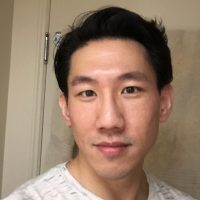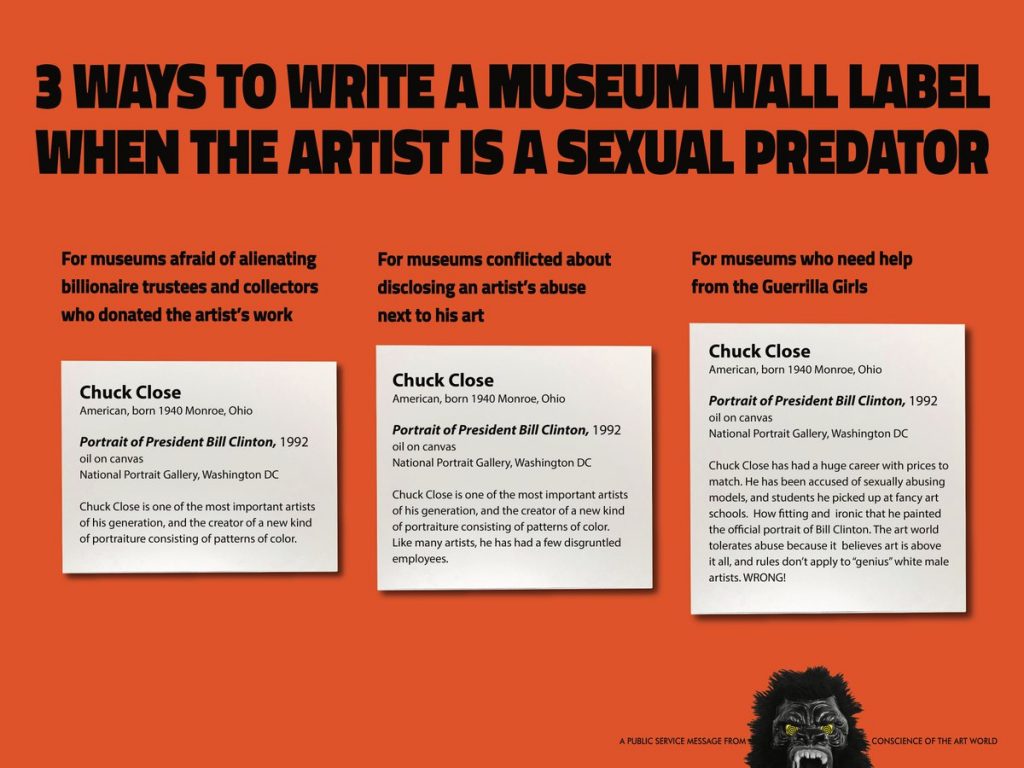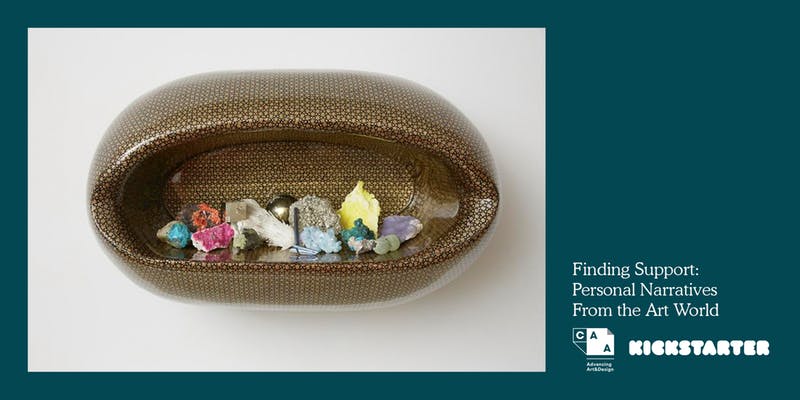CAA News Today
Meet the 2018 Professional Development Fellows
posted by CAA — Jan 28, 2019
CAA has awarded two 2018 Professional Development Fellowships—one in art history and one in visual art—to graduate students in MFA and PhD programs. In addition, CAA has named one honorable mention in art history and two in visual art. The fellows and honorable mentions both receive a complimentary one-year CAA membership and registration for the 2019 Annual Conference in New York City.
The recipient of the $10,000 fellowship in art history is C.C. McKee, a dual PhD candidate in the Department of Art History at Northwestern University and the École des hautes études en sciences sociales in Paris. Accepting the $10,000 fellowship in visual art is Camila Labarca Linaweaver, a MFA candidate in Printmaking at the University of Oklahoma.
The honorable mention for art history goes to Julia Vázquez, a PhD candidate in the Department of Art History & Archaeology at Columbia University. The honorable mentions in visual art are awarded to Kira Dominguez Hultgren, who is earning a MFA/MA in Fine Arts and Visual and Critical Studies at California College of the Arts, and Rowan Renee, who is currently pursuing their MFA at the University of Michigan.
The two fellows and three honorable mentions will be formally recognized at the 107th Annual Conference during Convocation on Wednesday, February 13, 2019.
CAA’s fellowship program supports promising artists and art historians who are enrolled in MFA and PhD programs nationwide. Awards are intended to help them with various aspects of their work, whether for job-search expenses or purchasing materials for the studio. CAA believes a grant of this kind, without contingencies, can best facilitate the transition between graduate studies and professional careers. The program is open to all eligible graduate students in the visual arts and art history. Applications for the 2019 fellowship cycle will open in the late spring.
FELLOW IN ART HISTORY
 C.C. McKee
C.C. McKee
C.C. McKee is a dual doctoral candidate in the Department of Art History at Northwestern University (advised by Huey Copeland) and the École des hautes études en sciences sociales in Paris (advised by Anne Lafont). McKee received his BA from the University of California, Berkeley as a double major with honors in the history of art and highest honors in history.
McKee’s current dissertation project takes up art and visual culture from the francophone Caribbean during the long nineteenth century, arguing that, on the one hand, painting could bolster imperial authority by eliding the coeval inhumane violence and ecological brutality of colonialism. On the other, these artworks are inadvertent repositories for parallel ecologies opening onto embodied African diasporic knowledge of the Caribbean landscape.
This project represents one facet of McKee’s broader investment in the transhistorical relationship between colonialism (particularly during the seventeenth through nineteenth centuries) and its continued effects in the present. These interests include, art of the Atlantic World, contemporary African and African diasporic art, and queer aesthetic practices; all of which are indebted to black feminist, ecocritical, postcolonial, and psychoanalytic theories. McKee has developed these perspectives in various pieces of art criticism; with exhibitions at the Block Museum, Iceberg Projects (Chicago, IL), and the Ghetto Biennale (Port-au-Prince, Haiti); as well as in a forthcoming article for Art Journal. Moving forward, McKee will pursue a scholarly and curatorial practice that challenges the boundaries between the university classroom and the museum, between academic publication and exposing a broad public to the rich artistic traditions of the Caribbean.
FELLOW IN VISUAL ART
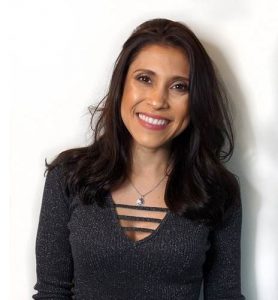 Camila Labarca Linaweaver
Camila Labarca Linaweaver
Camila Labarca Linaweaver was born in Santiago, Chile and immigrated to the United States at the age of 7. She lived and studied in Texas and holds a BFA from The University of Houston Clear Lake. She is a first-generation college graduate and is currently an MFA Printmaking candidate at The University of Oklahoma. While pursuing her graduate studies she has taught undergraduate courses in Printmaking and Drawing. Linaweavers focus within the printmaking medium is almost exclusively on singular and experimental prints. Using the landscape as a metaphor, she crafts narratives of immigrant displacement, loss, and alienation. Recently she has delved into time-based work, subjecting monotypes to various stop motion processes. Her unique approach to confronting her personal history as an immigrant results in highly nuanced imagery that aims to bridge opposing sides and create positive discourse within the context of global immigration issues.
As an emerging artist, Linaweaver has exhibited extensively throughout the US and has chosen to pursue a career in academia. In the future she aspires to participate in residencies and exhibitions that focus on community engagement and the intersection of landscape, identity, and culture.
HONORABLE MENTION IN ART HISTORY
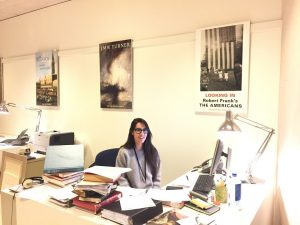 Julia Vázquez
Julia Vázquez
Julia Vázquez is a PhD candidate in the Department of Art History & Archaeology at Columbia University, where she is currently completing a dissertation titled “The Artist as Curator: Diego Velázquez, 1623-1660.” Her dissertation reconsiders the curatorial career of Diego Velázquez at the court of King Philip IV of Spain. It examines the major redecoration projects that Velázquez executed for galleries in the Spanish royal palace, considering the ways that his ambitions and interests as a painter found a new expression in this medium. It also analyzes significant paintings that Velázquez made in response to the royal art collection, considering the impact on his painting practice not only of its contents, but also of its display. Her research therefore proposes the career of Diego Velázquez at the Hapsburg court as a major episode in the history of the artist-curator, ultimately arguing that Velázquez’s simultaneous creative identities as painter to the king and curator of his art collection were mutually transformative.
Previously, Julia has held internships and fellowships at the Musée du Louvre, the Whitney Museum of American Art, the Meadows Museum, the Museo Nacional del Prado, and the National Gallery of Art. While at the Meadows, she curated two exhibitions: “Picasso’s Dream and Lie of Franco: The Spanish Civil War in Print” (summer 2017) and “Murillo at the Meadows: A 400th-Anniversary Celebration” (2017-2018). She is currently the Hilla Rebay International Fellow at the Solomon R. Guggenheim Museum, the Museo Guggenheim Bilbao, and the Collezione Peggy Guggenheim.
HONORABLE MENTIONS IN VISUAL ART
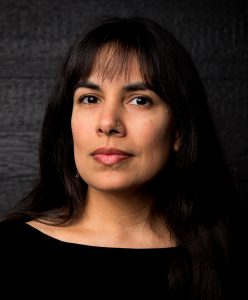 Kira Dominguez Hultgren
Kira Dominguez Hultgren
Kira Dominguez Hultgren (b. 1980) is a California-, Utah-, and Minnesota-based textile artist. She studied French postcolonial theory and literature at Princeton University (BA Comparative Literature, 2003), and performance and fine arts in Río Negro, Argentina from 2010-2012. While in Patagonia, she apprenticed with master weaver Mary Coronado, where Dominguez Hultgren studied the process and history of indigenous warp-faced weaving of Mallín Ahogado on a Mapuche vertical post loom.
Today, Dominguez Hultgren combines her interests in postcolonial theory and weaving in both her art and writing-research practice. In her third year at California College of the Arts, Dominguez Hultgren is earning a dual-degree MFA/MA in Fine Arts and Visual and Critical Studies. Her research interests include material and embodied rhetorics, loom technologies, decolonizing material culture, and analyzing textiles as a performative critique against the visual. She has won numerous awards including California College of the Art’s All College Honors Graduate Fine Art Award, the Edwin Anthony and Adalaine Boudreaux Cadogan Scholarship, and the Lenore Tawney Fiber and Material Studies Scholarship. Dominguez Hultgren is represented by Eleanor Harwood Gallery in San Francisco, where she had her first solo show, Wingspan, in 2018.
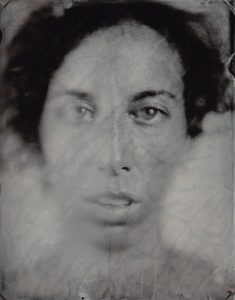 Rowan Renee
Rowan Renee
Rowan Renee is a genderqueer artist who uses photography to interrogate how sexual bodies are gendered, victimized, policed and punished. Through photographic, printmaking and sculptural techniques, they produce and appropriate images that intervene on issues of authorship, the representation of queer and feminine bodies within the art-historical canon, and the intersection of homophobia and misogyny in sex law and copyright law. The disjunctures of pleasure and abjection, felt through jouissance, informs their manipulation of images. Through artistic labor, they see a means to construct transformative meaning from experiences of violence, persecution and erasure that threaten queer and feminine subjects.
Currently pursuing their MFA at the University of Michigan, Renee works between Ann Arbor, Michigan and Brooklyn, NY. Their career began in 2006, when they joined The Miss Rockaway Armada, a collaborative flotilla of thirty people who floated down the Mississippi river on junk rafts built from NYC construction waste. Recently, they have received awards from the Aaron Siskind Foundation, the Rema Hort Mann Foundation and the Anchorage Museum of Art, as well as fellowships from the Jerome Foundation and the McColl Center for Visual Art. In 2018 they were named an Elsie Choy Lee Scholar by the University of Michigan. Their solo exhibitions include Z at Pioneer Works (2015), Bodies of Wood at The Aperture Foundation (2017), and No Honor No Heart at the Center for Visual Arts Toledo (2019). Their work has been profiled on NPR, in The New York Times, VICE, Hyperallergic, Huffington Post, American Photo Magazine and Guernica, among many other publications.
Meet the 2019 Student Scholarship Winners
posted by CAA — Jan 25, 2019
with support from

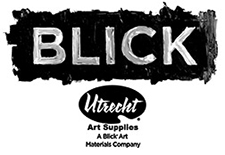
For the third year in a row, CAA is proud to partner with our sponsors, multinational publisher, Routledge, Taylor & Francis, and art materials specialist, Blick Art Materials, on student scholarships to assist CAA student members with conference costs.
Routledge, Taylor & Francis Student Scholarship
CAA Annual Conference Premier Sponsor, Routledge, Taylor & Francis supports four CAA student members with a $250 scholarship. The 2019 winners are:
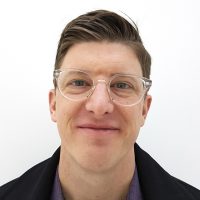
Jonathan Anderson
Jonathan Anderson is an artist and art critic, and is currently working on a PhD at King’s College London. His research focuses on modern and contemporary art, with a particular emphasis on its relations to religion and theology. He is the coauthor of the book Modern Art and the Life of a Culture: The Religious Impulses of Modernism (2016), and he has contributed to various books and journals, including essays on John Cage, Francis Alÿs, Kris Martin, Rachel Whiteread, and others.
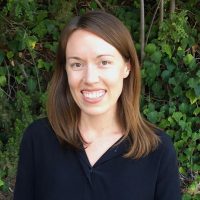
Noni Brynjolson
Noni Brynjolson is a PhD Candidate in Art History, Theory & Criticism at the University of California, San Diego. Her research analyzes socially engaged art projects in US cities. She is interested in looking at how artists address the politics of housing and gentrification through their work, as well as the informal communities that emerge within these projects. Noni is a member of the editorial collective of FIELD: A Journal of Socially Engaged Art Criticism, and her writing has been published in FIELD as well as in Hyperallergic, Akimbo, Geist and Craft Journal. She has also published chapters in two edited books: “From Mentorship to Collaboration: Art, Feminism and Community in Winnipeg” (in Desire Change: Contemporary Feminist Art in Canada, McGill Queen’s University Press, 2017), and “The Making of Many Hands: Artisanal Production and Neighbourhood Redevelopment in Contemporary Socially Engaged Art” (in Craft on Demand: The New Politics of the Handmade, I.B. Tauris, forthcoming 2019). Noni’s dissertation research was supported by a SSHRC doctoral fellowship, and she is currently a graduate fellow at UC San Diego’s International Institute as part of the 2018-19 Sawyer Seminar focused on the theme of ‘Reclaiming the City.’
Anton Lee
Anton Lee teaches in the Department of Art History, Visual Art and Theory at the University of British Columbia, Vancouver BC, where he completed his doctorate in November 2018. A specialist in the history and theory of photography, his work focuses on the contested understandings of the medium’s identities in European and Anglo-American countries from the early 20th century to the present. His current research prioritizes transforming his doctoral dissertation into a book, provisionally titled Nouvelle Photographie Amériaine: The Rise of Photographic Sequence in the United States and France, 1968–1989. Lee was the Kenneth J. Botto Research Fellow at the Center for Creative Photography in Tucson in 2016 and a Visiting Researcher at the Université Paris-Sorbonne in 2015.
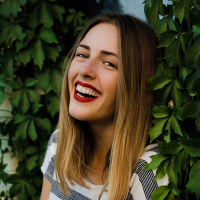
Candace Smith
Candace Smith currently studies Art History at the University of North Texas where she is working towards an MA under Dr. Nada Shabout in the field of Modern and Contemporary Art of the Middle East. Her current research explores issues of power, identity politics, and built space in the context of postwar Lebanese Art institutions and reconstruction (1990-present). Smith has presented and lectured on politics, power, and space, both as a university level and at the Texas Sculpture Symposium with NY-based artist Wafaa Bilal. She has also spent time abroad meeting and working directly with some of Beirut’s most prominent art collectors and foundations as well as emerging Beirut-based artists such as Hiba Kalache. Smith received a BA from Texas Tech University after completing undergraduate thesis work on 21st-Century street art created during times of conflict in central Cairo and the West Bank. Working directly with published photojournalists and prominent, local artists, Smith addressed local agency and perceptions of space in direct contrast with American and European activity in the area. Smith was the director of social media for AMCA and collaborated with Selections Magazine on their Winter 2018 Art Pages.
Blick Art Materials Student Scholarship
CAA Annual Conference Supporter Sponsor, Blick Art Materials supports four CAA student members with a $250 scholarship. The 2019 winners are:
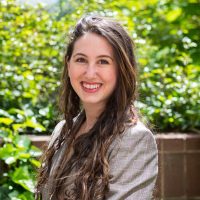
Margot Bernstein
Margot Bernstein is an advanced PhD candidate at Columbia University with a specialization in eighteenth-century art and material culture. Her dissertation, “Carmontelle’s Profile Pictures and the Things that Made Them Modern,” examines hundreds of portraits on paper by Louis Carrogis called Carmontelle (1717-1806), a French amateur draftsman. Margot holds a BA (2010) in art history and history from Williams College and an MA (2012) in the History of Art from the Courtauld Institute of Art. She also holds an MA (2014) and an MPhil (2015) in art history from Columbia University. In recent years, she has worked at the Metropolitan Museum of Art, the Frick Collection, the Morgan Library & Museum, the New-York Historical Society, the Calder Foundation, and the Williams College Museum of Art. Currently, Margot is a Chester Dale Fellow in the Department of Drawings and Prints at the Metropolitan Museum of Art.
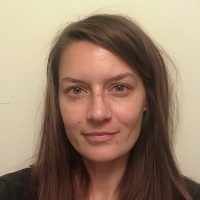
Jessica Crocker
Jessica Rae Crocker lives and works in Prescott, AZ. She is currently pursuing her PhD in Philosophy, Aesthetics, and Art Theory through IDSVA (Institute for Doctoral Studies in the Visual Arts). She is a ceramic artist focusing on the role of craft as a means to develop intimacy. Her recent work explores relationships and limerence through the use of imbedded interactive technologies. She works in both figurative and functional paradigms embracing the historical symbolism of the clay material in its many forms. This generous gift is allowing her to attend the CAA conference for the first time.
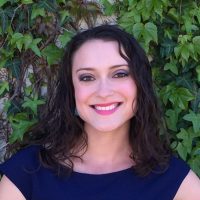
Kimberly Minor
Kimberly Minor is a doctoral candidate in Art History at the University of Oklahoma. Her research broadly focuses on American art, with interests in material culture, art of the early American West, and Northern Plains Indian drawings. Her dissertation “Pictographic Motifs: Memory and Masculinity on the Upper Missouri” engages the visual, material, and experiential sources of military imagery produced by the Mandan and Hidatsa during the early nineteenth-century. She studies how indigenous male identity was negotiated through constant confrontation (both physical and spiritual) with war and warriors, adding to a growing body of scholarship that emphasizes and affirms the importance of indigenous histories. Her research has been supported by the Smithsonian Institute of Museum Anthropology and the ACLS/Luce Dissertation Fellowship in American Art.
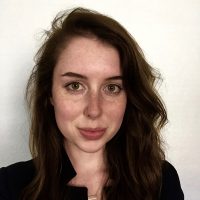
Laura Stowell
Laura Stowell is a third-year PhD Student in Art History at the University of Washington, Seattle. She received her MA in Contemporary Art from Sotheby’s Institute of Art, New York. Her research explores intersections of performance, affect, aesthetics, and trauma in art from 1945 to the present, with specific emphasis on feminist approaches to the body. In 2018 she presented a paper titled “Listening to the Body in Pain: Regina José Galindo’s (279) Golpes” at UC San Diego’s Graduate Visual Arts Symposium, and a paper titled “Pathography and the work of Alina Szapocznikow” at the Legacies of the Enlightenment Workshop at Michigan State University. She worked as the Curatorial Assistant at the Henry Art Gallery, Seattle, and plans on continuing to work in the curatorial field.
Criteria for the Scholarship
Awardees were chosen at random and fulfilled the following criteria:
- Individuals were registered for the Annual Conference by the Early Registration deadline
- Individuals are current CAA members with proof of student status
- Individuals did not receive conference registration or travel reimbursement from their institution or employer
We look forward to seeing you in New York City next month! The 107th Annual Conference is February 13-16, 2019. Click here to explore the conference program.
Meet the 2018 CAA Campus Ambassadors
posted by CAA — Dec 05, 2018
Launched this fall, the CAA Ambassador Program is now in full swing. CAA Ambassadors are representing the organization in New York and Chicago and giving presentations to their fellow classmates and students in nearby schools. Meet the inaugural class of ambassadors below.
Interested in becoming a future CAA Ambassador? Learn more here.
Rikki Byrd
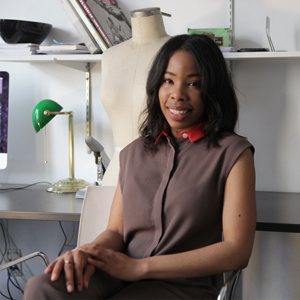
Rikki Byrd is a writer, educator and scholar, with research interests in Black studies, visual culture, fashion history and cultural studies. Her research has appeared at Art Basel: Miami and has been published or is forthcoming in various academic journals and books. She has also written for Teen Vogue, Art.sy, and Hyperallergic, among several other media outlets. She has lectured and participated in panel discussions with Google and The Council of Fashion Designers of America, Parsons School of Design, Junior High! in Los Angeles and Saint Louis Art Museum. Most recently, Rikki was a faculty member at Washington University in St. Louis in the Sam Fox School of Design & Visual Arts and the African and African American Studies department. She is currently a PhD student in African American Studies at Northwestern University.
J. English Cook
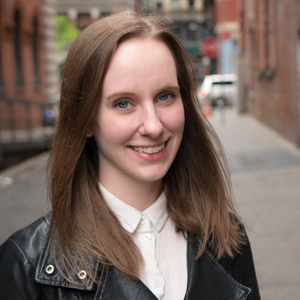
J. English Cook is a PhD candidate at the Institute of Fine Arts, NYU, where she specializes in intersections between architecture, cinema, and urban theory. Her dissertation examines the impact of cinema on the postwar spread of phenomenology, particularly as expressed in architects’ re-articulation of notions of spatial experience. She previously received an MA with distinction from the Institute of Fine Arts and a BA with highest honors from Williams College. A native of Atlanta, Georgia, she is currently the Graduate Curatorial Assistant at the Grey Art Gallery, NYU, and has worked as a Curatorial Assistant in Modern and Contemporary Art at the High Museum, Atlanta, and as the Commissioner’s Assistant for the US Pavilion at the 2010 Venice Architecture Biennale. She has produced performances at Momentum Worldwide, a time-based media gallery in Berlin, and has interned in curatorial departments at the Museum of Modern Art, the Whitney Museum of American Art, and the Williams College Museum of Art.
Rebecca Pollack
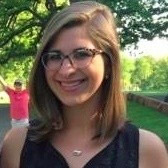
Rebecca Pollack is a doctoral candidate in art history at the CUNY Graduate Center. Her dissertation “Contextualizing British Holocaust Memorials and Museums: Form, Content, Politics,” examines the publicly funded Holocaust commemorative projects in Britain. She currently holds fellowships from the Memorial Foundation for Jewish Culture, the Jewish Studies Center at the CUNY Graduate Center, and the Paul Mellon Centre for British Art.
Mia Rubin
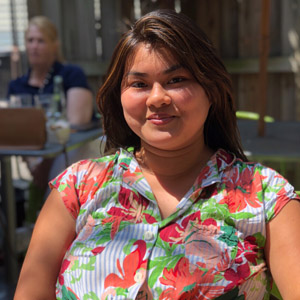
Mia Rubin is a recent Parsons School of Design graduate. Mia is the Events and Conference Programming Intern at CAA and one of CAA’s newest ambassadors. She will assist with planning the Annual Conference. Mia will help organize pre-conference workshops, key conversation panels, events for students, and museum tours. She will research and help develop workshops and programs throughout the year.
Urooj Shakeel
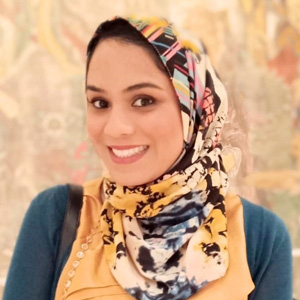
Urooj Shakeel is a graduate student at the School of the Art Institute of Chicago in the Master of Arts in Arts Administration & Policy program. She is also the Leadership Investment and Communications Field Fellow at The Field Foundation of Illinois. Currently, Urooj is working on her thesis project and is designing a library exchange box in the shape of a Pakistani truck that is painted in the traditional art form known as Truck Art. This project examines activating public space for educative functions on Chicago’s Devon Avenue for preadolescents. As a leader, Urooj also serves on the SAIC Graduate Advisory Panel, working closely with the Graduate Dean’s Office to bring attention to graduate student interests through information sharing and problem solving. She earned her BS in Marketing and BA in Art History from Wayne State University in Detroit, Michigan.
CAA Announces 2019 CAA-Getty International Program Participants
posted by CAA — Nov 02, 2018
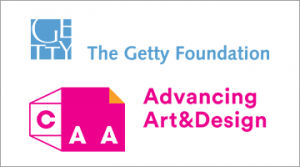
CAA is pleased to announce this year’s participants in the CAA-Getty International Program. Now in its eighth year, this international program supported by the Getty Foundation will bring fifteen new participants and five alumni to the 2019 Annual Conference in New York City. The participants—professors of art history, curators, and artists who teach art history—hail from countries throughout the world, expanding CAA’s growing international membership and contributing to an increasingly diverse community of scholars and ideas. Selected by a jury of CAA members from a highly competitive group of applicants, participants will receive funding for travel expenses, hotel accommodations, conference registration, CAA membership, and per diems for out-of-pocket expenditures.
At a one-day preconference colloquium, to be held this year at Parsons School of Design, the fifteen new participants will discuss key issues in the international study of art history together with five CAA-Getty alumni and several CAA members from the United States, who also will serve as hosts throughout the conference. The preconference program will delve deeper into subjects discussed during last year’s program, including such topics as postcolonial and Eurocentric legacies, interdisciplinary and transnational methodologies, and the intersection of politics and art history.
This is the second year that the program includes five alumni, who provide an intellectual link between previous convenings of the international program and this year’s events. They also serve as liaisons between CAA and the growing community of CAA-Getty alumni. In addition to serving as moderators for the preconference colloquium, the five alumni will present a new Global Conversation during the 2019 conference titled Creative Pedagogy: Mapping In-between Spaces Across Cultures.
The goal of the CAA-Getty International Program is to increase international participation in the organization’s activities, thereby expanding international networks and the exchange of ideas both during and after the conference. CAA currently includes members from over 50 countries around the world. We look forward to welcoming the following participants at the next Annual Conference in New York City.
2019 PARTICIPANTS IN THE CAA-GETTY INTERNATIONAL PROGRAM
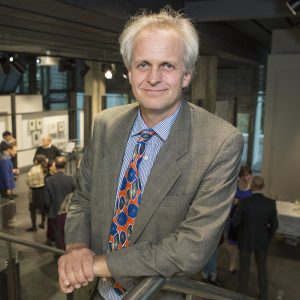
Richard Bullen is associate professor of art history at the University of Canterbury, New Zealand. He graduated with a PhD from the University of Otago in 2003. Bullen’s principal areas of research are Japanese aesthetics and East Asian art collections in New Zealand. During his years living in Japan, he studied tea ceremony and calligraphy and has since published on aspects of tea ceremony aesthetics. With James Beattie he recently completed a major publicly-funded project to document New Zealand’s largest collection of Chinese art, the Rewi Alley Collection at Canterbury Museum. Their website catalogues all 1400 objects in the collection: http://www.rewialleyart.nz. Together, they also have produced a number of publications, including New China Eyewitness: Roger Duff, Rewi Alley and the Art of Museum Diplomacy (2017) and co-curated three exhibitions. Bullen is currently working on art made in World War II by Japanese POWs held in Australasia.
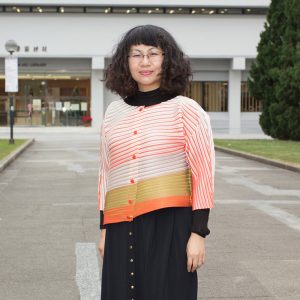
Pedith Chan is an assistant professor of Cultural Management in the Faculty of Arts at the Chinese University of Hong Kong. She received her PhD in Art and Archaeology from SOAS, University of London. Before joining the Chinese University of Hong Kong Chan was an assistant curator at the Hong Kong Museum of Art, and an assistant professor at the City University of Hong Kong. Her research interests focus on the production and consumption of art and cultural heritage in modern and contemporary China. Recent publications include The Making of a Modern Art World: Institutionalization and Legitimization of Guohua in Republican Shanghai (Leiden: Brill, 2017), “Representation of Chinese Civilization: Exhibiting Chinese Art in Republican China,” in The Future of Museum and Gallery Design (London: Routledge, 2018), and “In Search of the Southeast: Tourism, Nationalism, Scenic Landscape in Republican China,” (Twentieth-Century China, 2018). She is currently researching the making of scenic sites in modern China.
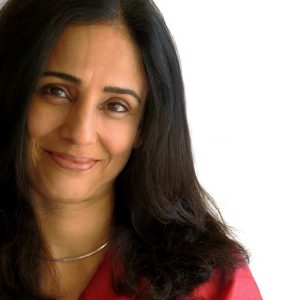
Swati Chemburkar is an architectural historian who lectures and directs a diploma course on Southeast Asian Art and Architecture at Jnanapravaha, a center for the arts in Mumbai, India. In addition, she is a visiting lecturer at the School of Oriental and African Studies (SOAS), London, and SOAS’s summer schools in Southeast Asian countries. Chemburkar’s work focuses on eighth- through twelfth-century Southeast Asia, particularly the relationship between texts, rituals, art, architecture, and cross-cultural exchanges in maritime Asia. Her ongoing research explores the spread of the ancient Śaiva sect of Pāśupatas in this region. She has edited Art of Cambodia: Interactions with India (Marg Magazine, Volume 67 Number 2, December 2015-March 2016) and contributed papers to several journals and publications, including the recent “Visualising the Buddhist Mandala: Kesariya, Borobudur and Tabo” in India and Southeast Asia: Cultural Discourse (K. R. Cama Oriental Institute, Mumbai, 2017) and “Pāśupata Sect in Ancient Cambodia and Champa” (co-authored with Shivani Kapoor) in Vibrancy in Stone: Masterpieces of the Đà Nẵng Museum of Cham Sculpture (River Books, 2017).
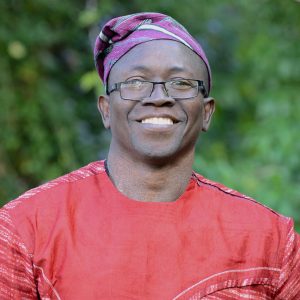
Stephen Fọlárànmí is a senior lecturer in the Department of Fine & Applied Arts, Ọbáfémi Awólọ́wọ̀ University, Ilé-Ifè, Nigeria. His research focuses on Yoruba art and African mural art and architecture. In particular, Fọlárànmí’s extensive research on the art and architecture of the Òyó and Iléṣà palaces has been published in journals, conference proceedings, and as book chapters. A recent example, “Palace Courtyards in Iléṣà: A Melting Point ofTraditional Yorùbá Architecture,” co-authored with Adémúlẹ̀yá, B.A., was published in Yoruba Studies Review 2, no. 2 (Spring 2018): 51-76. Fọlárànmí was a recipient of the first Höffmann-Dozentur für Interkulturelle Kompetenz at University of Vechta, Germany (2008-09). As an artist Fọlárànmí has exhibited his work in Nigeria, London, Germany, and the United States. He was the chair of the Department of Fine and Applied Arts, Obafemi Awólọ́wọ̀ University, Ile-Ife, between August 2016 and January 2018. Currently, he is a research fellow in the Fine Arts Department, Rhodes University, Grahamstown, South Africa.
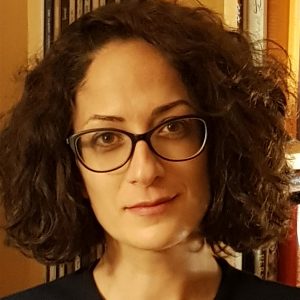
Negar Habibi is a Persian art historian and lecturer in Islamic art history at the University of Geneva, Switzerland, where she teaches history of Persian painting from early Islamic times until the modern era. She completed a PhD in 2014 in art history at the Aix-Marseille University in France with a dissertation titled “The Farangi sāzi and Paintings of Ali Qoli Jebādār: an Artistic Syncretism under Shah Soleymān (1666-1694).” Habibi conducts research on paintings from early modern Iran. Adopting a multidisciplinary approach, her work focuses on the career and life of the artist, especially issues of signature authenticity, gender, and artistic patronage in early modern Iranian society. She has published several articles on the art and artists of late-seventeenth-century Iran, and her book titled Ali Qoli Jebādār et l’occidentalisme safavide: une étude sur les peintures dites farangi sāzi, leurs milieux et commanditaires sous Shah Soleimān (1666-94) was published in January 2018 by Brill.
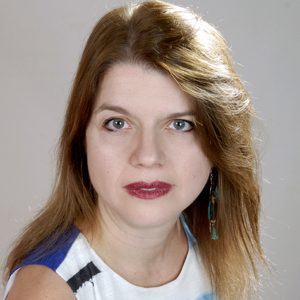
Iro Katsaridou has been the curator of modern and contemporary art at the Museum of Byzantine Culture in Thessaloniki, Greece since 2005. She studied art history at the Aristotle University of Thessaloniki and the Université Paris I-Sorbonne, and also pursued museum studies at the City University of New York. Her doctoral dissertation (Aristotle University, 2010) focused on contemporary Greek photography from 1970-2000. For the past five years Katsaridou has been researching historical photography in Greece, seeking to unravel the role of politics in the formation of photographic representations. In this particular field she also has curated exhibitions of photography and art in wartime (World War I and II) and edited related catalogues. She has co-edited a book about photography during the Nazi Occupation of Greece (1941-1944) and written articles and book chapters on photography (both historical and contemporary), exhibition display policies, as well as the relationship between contemporary Greek art and politics.
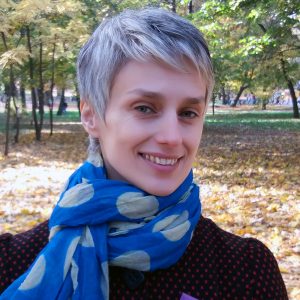
Halyna Kohut is an associate professor in the Faculty of Culture and Arts at the Ivan Franko National University of Lviv, Ukraine, where she teaches history of art, contemporary art, and history of theatrical costume. Originally educated as a textile artist, she received a PhD from the Lviv National Academy of Arts with a dissertation on seventeenth- and eighteenth-century Ukrainian kilims. She is the recipient of scholarships and grants from the Austrian Agency for International Mobility and Cooperation in Education, Science and Research, the Canadian Institute of Ukrainian Studies at the University of Alberta, and the Queen Jadwiga Foundation at the Jagiellonian University in Cracow. Kohut studies Ukrainian kilims as an intermediate zone between Oriental and Western design traditions formed on the so-called Great cultural frontier between the Christian West and Islamic East. She is especially interested in the migration of ornamental patterns as well as the articulation of textile’s social and political meanings in the historical context.
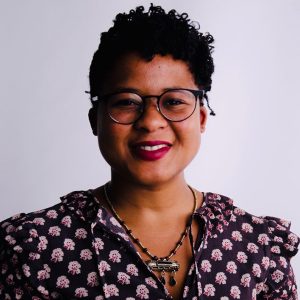
Zamansele Nsele is an art historian and a lecturer in design studies in the Faculty of Art, Design and Architecture at the University of Johannesburg, South Africa. She recently submitted her doctoral thesis in Art History & Visual Culture, titled Post-Apartheid Nostalgia and the Future of the Black Visual Archive. In 2018, Nsele was included in the Mail & Guardian’s prestigious list of Top 200 Young South Africans. She has presented her PhD research at Vanderbilt University and Rutgers University (USA), the University of East Anglia (UK), the University of Ghana in Accra (Ghana), and Rhodes University and the University of Cape Town (South Africa). In July 2018, she was a guest speaker at the Museum Conversations Conference hosted by the University of Namibia and the Goethe-Institut Namibia. Her research interests include post-Apartheid nostalgias, contemporary African art, blackface minstrelsy in South African visual culture and Africana studies.
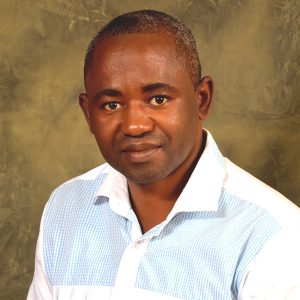
Chukwuemeka Nwigwe is a Nigerian artist and art historian who teaches fashion/textile design and art history at the University of Nigeria Nsukka. He holds a PhD in art history, MFA in textile design, and BA in fine and applied arts from the same university. Nwigwe’s current research is on identity, exemplified in two recent publications: “Fashioning Terror: The Boko Haram Dress Code and the Politics of Identity” (Journal of Fashion Theory, January 2018) and “Breaking the Code: Interrogating Female Cross Dressing in Southeastern Nigeria” (posted online as part of a 2018 ACLS African Humanities Program Postdoctoral Fellowship). Nwigwe also practices as a studio artist. His recent studio experiments with waste plastic, synthetic bags, and foil wrappers, usually woven arbitrarily, have been influenced largely by his research on bird nests begun during his MFA studies.
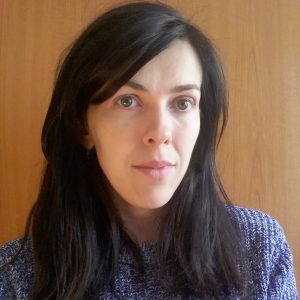
Oana Maria Nicuță Nae is an assistant professor in the Department of Art History and Theory, Faculty of Visual Arts and Design, George Enescu National University of Arts, Iasi, Romania. She received a PhD in art history from the same university, where she currently teaches courses on the history of modern European art, the history of design, and art and society in modern Europe. Most recently she published “The Materialization of Light in the Art of the (Neo-) Avant-Gardes,” in Objects and Their Traces: Historical Gazes, Anthropological Narratives, Cristina Bogdan, Silvia Marin Barutcieff (coord.), Bucharest University Press (Bucharest, 2018). Nicuță Nae’s current research focuses on the representation of women in Romanian modern art. She also studies multiple modernities, taking into account the particular position of Romanian art narratives in regional and global attempts to construct encompassing ones. Recently she has started parallel research on the notion of influence in nineteenth-century Romanian and European art.
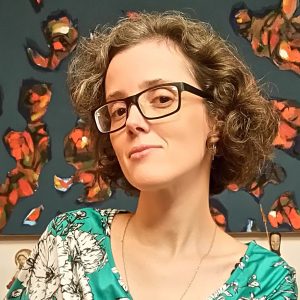
Tamara Quírico is an associate professor in the Art Institute of the Universidade do Estado do Rio de Janeiro (State University of Rio de Janeiro, UERJ, Brazil), where she teaches courses to undergraduate students majoring in art history and visual arts and art history courses to graduate students pursuing MA and PhD degrees. She earned her PhD in social history from the Universidade Federal do Rio de Janeiro, in a joint supervision program with the Università di Pisa (Italy), in which she studied changes in the iconography of the Last Judgment in fourteenth-century Tuscan painting. Her dissertation, “Inferno and Paradiso: Representations of the Last Judgment in Fourteenth-Century Tuscan Painting,” was published in Portuguese in 2014. Quírico studies Italian paintings from the thirteenth and fifteenth centuries, focusing in particular on the uses and functions of Christian images, as well as devotional practices and exchanges between Christian images from Europe and Spanish America.
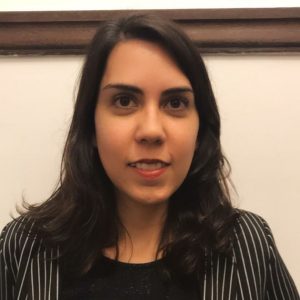
Juliana Ribeiro da Silva Bevilacqua is a specialist in African and Afro-Brazilian art. She studied at the University of São Paulo, where her PhD dissertation was on the Museu do Dundo in Angola (1936–61). From 2004–14 she worked as a researcher at the Museu Afro Brasil in São Paulo. She collaborates with different museums in Brazil researching African art and Afro-Brazilian art collections, including the Museu de Arte de São Paulo and the Museu de Arqueologia e Etnologia at the University of São Paulo. In 2015 she was a guest editor of Critical Interventions: Journal of African Art History and Visual Culture in an issue dedicated to Afro-Brazilian Art. Since 2017 she has been a professor collaborating with the graduate program in Art History at the University of Campinas (Unicamp). Recently she was a visiting professor at the Universidad de Los Andes, Bogota, Colombia, in the Connecting Art Histories program sponsored by the Getty Foundation.
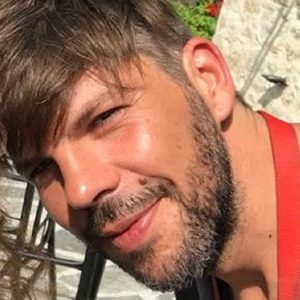
Marko Stamenkovic, born in the former Yugoslavia, is an associate curator of ZETA Contemporary Art Center in Tirana, Albania. He is an art historian and transcultural theorist with a strong interest in the decolonial politics of race, ethnicity, and sexuality. Over the past decade, he has been working primarily in the field of contemporary visual arts as a freelance curator, critic, and writer focused on the intersection of visual thinking and social theories, political philosophies, and cultural practices of the marginalized and the oppressed. He holds a PhD in philosophy from Ghent University (Belgium) where he worked on questions of sacrifice, self-sacrifice in protest, and suicide to explore the relationship between human mortality and politico-economic powers on the darker side of democracy, from a perspective of the global South. He is a member of AICA (International Association of Art Critics) and IKT (International Association of Curators of Contemporary Art).
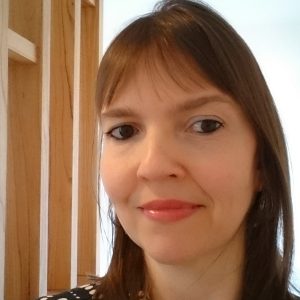
Viviana Usubiaga holds a PhD in art history from the Universidad de Buenos Aires (UBA) in Argentina. She is an associate professor of contemporary art at the Universidad Nacional de San Martín and an assistant professor of modern and contemporary art history at UBA. Usubiaga is also an adjunct researcher of the Consejo Nacional de Investigaciones Científicas y Técnicas (CONICET) and a board member of the Centro Argentino de Investigadores de Arte (CAIA). Her fields of interest include visual arts, literature, and museum studies, focusing on the political impact of transnational circulation of artistic images and texts during socially traumatic periods, including dictatorships and post-dictatorships in South America. Being a specialist in resistance art practices and institutional cultural politics, Usubiaga is the author of Imágenes inestables. Artes visuales, dictadura y democracia en Buenos Aires (2012). She also organizes independent curatorial projects in which she experiments with using scholarly methodologies in non-academic or non-specialist settings.
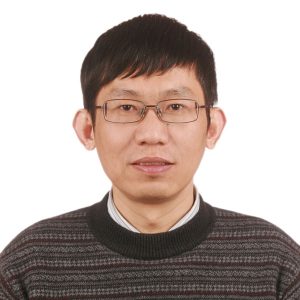
Jian Zhang was born in Hangzhou, China, and earned his PhD in art theory and history from the China Academy of Art, Hangzhou. He is a professor of art history at the School of Art and Humanities as well as the chief librarian of the Academy Library at the same university. His present research focuses on expressionism (formalism) in modern art historiography as well as the problem of its modernity. He is the author of Life of the Visual Form of Art, The History of the Western Modern Art, and An Alternative Story: Expressionism in the Western Modern Art Historiography, and also the translator of the Chinese edition of Wilhelm Worringer’s Form in Gothic, Heinrich Wolfflin’s The Sense of Form in Art: A Comparative Psychological Study (Italien und das deutsche Formgefühl) and Conrad Fiedler’s On Judging Works of Visual Art.
PARTICIPATING ALUMNI
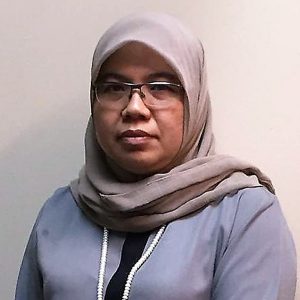
Sarena Abdullah is a senior lecturer in the School of the Arts at the Universiti Sains Malaysia in Penang, where she teaches art history to undergraduate and graduate students. She received an MA in art history from the University at Buffalo, State University of New York, and a PhD in art history from the University of Sydney in Australia. Specializing in contemporary Malaysian art with a broader interest in Southeast Asian art, Abdullah was the inaugural recipient of the London, Asia Research award given by Paul Mellon Center (London) and Asia Art Archive (Hong Kong). Her book Malaysian Art since the 1990s: Postmodern Situation was published in 2018, as was Ambitious Alignments: New Histories of Southeast Asian Art, for which she was a co-editor, published by the Power Institute and National Gallery Singapore. She first participated in the CAA-Getty International Program in 2016 and presented a paper as part of the program’s reunion during the 2017 conference.
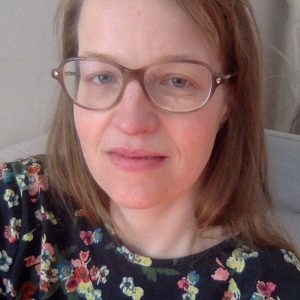
Katarzyna Cytlak is a Polish art historian based in Buenos Aires, Argentina, whose research focuses on Central European and Latin American artistic creations in the second half of the twentieth century. She studies conceptual art, radical and utopian architecture, socially engaged art, and art theory in relation to post-socialist countries from a transmodern and transnational perspective. In 2012, she received a PhD from the University Paris 1 Panthéon-Sorbonne, France. Cytlak was a postdoctoral fellow at the CONICET – National Scientific and Technical Research Council, Argentina (2015-2017). She is currently working as a researcher and professor at the Center for Slavic and Chinese Studies, University of San Martín, Argentina. Selected publications include articles in Umění/Art, Eadem Utraque Europa, Third Text, and the RIHA Journal. Cytlak is a grantee of the University Paris 4 Sorbonne (Paris), the Terra Foundation for American Art (Chicago, Paris) and the Institut National d’Histoire de l’Art (INHA, Paris). In 2018, she participated in the CAA-Getty International Program.

Nadhra Khan is a specialist in the history of art and architecture of the Punjab from the sixteenth to the early twentieth century. She received a PhD from the University College of Art & Design, University of the Punjab, Lahore, and teaches art history at Lahore University of Management Sciences, Lahore, Pakistan. Khan’s research focuses on the visual and material culture of the Punjab region during the Mughal, Sikh, and colonial periods. Her publications address several misconceptions and misrepresentations of Mughal and Sikh art and architecture as well as the state of art and craft in the Punjab under the British Raj and reflect the wide range of her interests and expertise.
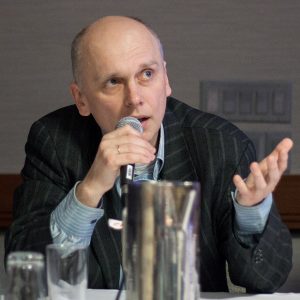
Nazar Kozak is a senior research scholar in the Department of Art Studies in the Ethnology Institute at the National Academy of Sciences of Ukraine. Previously he also taught the history of art at the Ivan Franko National University of Lviv. Kozak has received scholarships and grants from the Fulbright Scholar Program, State Scholarships Foundation of Greece, the American Council of Learned Societies, the Austrian Agency for International Mobility, and the Shevchenko Scientific Society in the United States. Kozak’s primary research is on Byzantine and post-Byzantine art in Eastern Europe. He is the author of Obraz i vlada: Kniazhi portrety u mystetstvi Kyïvskoï Rusi XI stolittia (Image and authority: Royal portraits in the art of Kyivan Rus’ of the eleventh century, Lviv, 2007). More recently, he has begun to work on contemporary activist art. His article on the art interventions during the Ukrainian Maidan revolution was published in the Spring 2017 issue of the Art Journal; it received an honorable mention as a finalist for that year’s Art Journal Award. Kozak participated in the CAA-Getty International Program in 2015 and presented a paper as part of the program’s reunion during the 2017 conference.
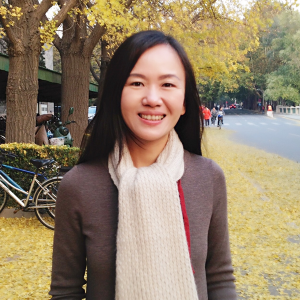
Chen Liu teaches art history and architecture at Tsinghua University in Beijing, China, where she received a bachelor’s degree in architecture with honors. After receiving a master’s in architecture and urban planning from the University of Maryland in 2000, she practiced as an architect in Washington DC until 2005. In 2011, she received a PhD in art history from Princeton University, specializing in Renaissance and Baroque art and architecture. In 2012, funded by an Andrew W. Mellow Fellowship, she helped create and direct the first Villa I Tatti summer research seminar designed specifically for Chinese scholars. “The Unity of the Arts in Renaissance Italy” provided participants with the opportunity to study firsthand the art and architecture of Renaissance Italy. Liu also teaches courses on the visual arts at Beijing Film Academy and Tongji University (Shanghai). She publishes widely on early modern art and architecture, as well as on the response of Chinese scholars to the Italian Renaissance. For the academic year 2018-2019 Liu is a Harvard-Yenching Institute Visiting Scholar at Harvard University.
News from the Art and Academic Worlds
posted by CAA — Oct 03, 2018
Spelman College Awarded $5.4 Million Grant to Increase Diversity in Museum Field
The grant will establish the Atlanta University Center Collective for the Study of Art History and Curatorial Studies. (Press release)
The Guerrilla Girls Are Helping Museums Contend With #MeToo. Read Their Proposed Chuck Close Wall Labels Here
The feminist collective shows how to call out—or gloss over—accusations against artists accused of sexual misconduct. (artnet News)
Research Study: Impact of Art Museum Programs on K–12 Students
This study builds on and amplifies previously limited research on the impact of art museum programming. (NAEA)
Guggenheim Museum Announces Free Admission for Students, Faculty, and Staff at Five CUNY Schools
The museum’s new program will provide over 100,000 New York City college students with free admission. (Press release)
The Getty to Start a Research Center for African-American Art
The Getty’s initial partners include the Studio Museum in Harlem, the California African American Museum, Art+Practice, and Spelman College. Dr. Kellie Jones, 2018 CAA awardee for Excellence in Diversity, will be a senior consultant for the project. (New York Times)
Seven Tips for Greater Accessibility at Events
“In 2018 accessibility means more than a ramp or an elevator. It means giving everyone a chance to experience your presentations, events, exhibits, and collections.” (American Alliance of Museums)
Affiliated Society News for September 2018
posted by CAA — Sep 11, 2018
Affiliated Society News shares the new and exciting things CAA’s affiliated organizations are working on including activities, awards, publications, conferences, and exhibitions.
We’re seeking new organizations to join CAA’s Affiliated Societies. Click here to learn more.
Mid-America College Art Association (MACAA)
Upcoming MACAA Conference: Oct 4—6, 2018: Techne Expanding New / Tensions New / Terrains New / Tools @ The University of Nebraska-Lincoln
The 2018 MACAA Conference will explore wide-ranging interpretations of technology and its use and impact on the teaching, making, and performing art as well as the broader human experience. Recognizing that technology has art and craft at its root (techne) and isn’t limited just to bigger, better, or faster tools and products, we will examine how we embrace or resist technology, how we celebrate or critique it, and consider its promise as well as its limits.
Reserve your room for the conference at the Embassy Suites by Hilton Lincoln. Tickets for the conference can be purchased through Eventbrite. Inquiries about the conference can be sent to Sandra Williams, Associate Professor and Conference Chair, swilliams2@unl.edu.
Get your MACAA membership registration here.
Upcoming MACAA Members’ Exhibition will be held at the Eisentrager-Howard Gallery at the University of Nebraska-Lincoln, October 3-19, 2018.
Upcoming for CAA 2019: MACAA’s CAA Affiliate Session
“Respond and Adapt: A Fuse of Art and the Other”
Co-chairs: Julie Marcelle Abijanac, Columbus College of Art & Design; Chung-Fan Chang, Stockton University
Wed, February 13, 2:00—3:30 PM, Room: Concourse G
A2RU
a2ru Circuits Webinar: Navigating Your Educational Path Toward an Interdisciplinary Career
Thursday, October 4, 2018
2:00-3:00pm ET
Register HERE
What might be needed to create an interdisciplinary career guide or toolkit for students who are looking toward a modern work life? This webinar will include alum from the a2ru Emerging Creatives Student Summits discussing both their interdisciplinary paths and experiences and what they would like to have known or had in support of their educational goals as an undergraduate student.
a2ru Annual National Conference: Arts Environments: Design, Resilience, and Sustainability
November 1-3, 2018
Hosted by University of Georgia (Athens, GA)
Registration now open!
The 2018 theme, Arts Environments: Design, Resilience, and Sustainability, is an invitation to explore the relationship between creativity and diverse cultural locations, by framing discussions about design, resilience, and sustainability in the context of interdisciplinary artistic and environmental practice. The theme offers an opportunity to think broadly about the ecology of the arts and their environments, in terms of performance, design, and engineering. A land and sea grant institution inextricable from the town of Athens and the broader ecologies of Georgia and the Southeast, the University of Georgia will provide a rich context for thinking creatively about Arts Environments globally. The 2018 conference will also include exhibits, installations, performances, and events throughout.
Historians of Islamic Art Association
The Historians of Islamic Art Association is delighted to annoucene that it’s sixth biennial symposium, “Border Crossing,” will be held at Yale University from October 25-27, 2018. Professor Zainab Bahrani will deliver the keynote lecture,“Ascent of Images: Mapping Time at the Amadiya Akropolis.” The symposium will bring together an international group of established and emerging scholars of Islamic art and architecture to present new research on the theme of “Border Crossing.” Very often the field has been defined as one centered on select regions of the Middle East, South Asia, and Central Asia, and focusing on traditional media and categories, such as the decorative arts, manuscript studies, and architecture. Less attention has been paid to regions on the so-called peripheries, including, for example, Southeast Asia and sub-Saharan Africa, or to disciplines that are not often associated with the field, such as film and anthropology.
“Border Crossing” will rethink the field of Islamic art and architecture by interrogating the ideas of translation, transmission, and transgression. Among the questions that will be asked are: How can this lens help us rethink works that form the “canon” of Islamic art? What is at stake in crossing disciplinary borders? What is lost and what is gained in abandoning traditional academic parameters? What may be learned through literal border crossings, whether they are by conservation authorities or refugees? As the works of several contemporary artists show, border crossings are ultimately ethical positions taken to evince the human condition itself. They thus provide potential to rethink the arts and cultures of the Islamic world, as well as the ways in which we study them today.
For more information, and to register, visit: hiaa2018.yale.edu
Association for Textual Scholarship of Art History (ATSAH)
William R. Levin (Centre College, emeritus) authored “The Bigallo Triptych: A Document of Confraternal Charity in Fourteenth-Century Florence” in Confraternitas, vol. 29, no. 1 (Spring 2018), pp. 55-101, with eight reproductions. The article considers the style, form, content, commission, and purpose of a long-recognized masterpiece of early Italian painting within the theological climate of its time, and is also available online at https://jps.library.utoronto.ca/index.php/confrat/article/view/29895. The journal is published by the Centre for Reformation and Renaissance Studies on behalf of the Society for Confraternity Studies, both headquartered at the University of Toronto.
Liana De Girolami Cheney (UMASS Lowell emerita), Visiting Researcher in Art History at SIELAE, Universidad de Coruña, Spain and Universittà di Aldo Moro, Bari, Italy
“Lavinia Fontana’s Cleopatra the Alchemist,” Journal of Literature and Art Studies (August 2018), Vol. 8. No. 8, pp. 1-22.
AICA-USA
AICA-USA is excited to participate in a members-only viewing of Shimon Attie’s public installation Night Watch. More Art, in collaboration with organizational partner, Immigration Equality, will host a VIP cocktail reception for AICA-USA members on the evening of Monday, September 24. This exclusive reception will include a walk as a group to the waterfront to view the work as well as the opportunity to meet with the artist, project participants, and More Art organizers. AICA-USA thanks More Art, Immigration Equality, and Shimon Attie for this special opportunity.
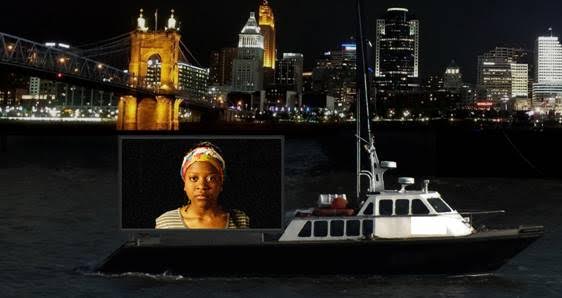
SECAC
The 74th Annual SECAC Conference, hosted by the University of Alabama at Birmingham, will be held October 17 through 20, 2018. More than 450 papers—on studio art, art history, art education, and graphic design—will be presented in 120 sessions. Offsite events include a keynote address by Andrew Freear of Auburn University’s Rural Studio and a reception to view the exhibition Third Space/Shifting Conversations about Contemporary Art at the Birmingham Museum of Art. The annual SECAC Artist’s Fellowship and Juried Exhibitions’ reception at will be held at UAB’s Abroms-Engel Institute for the Visual Arts. More information and conference registration are available at https://www.secacart.org.
Society of Historians of Eastern European, Eurasian, and Russian Art and Architecture (SHERA)
Society of Historians of Eastern European, Eurasian, and Russian Art and Architecture (SHERA) is pleased to announce the SHERA-sponsored session Looking East: Russian Orientalism in a Global Context, chaired by Dr. Maria Taroutina (Yale-NUS College) and Dr. Allison Leigh (University of Louisiana at Lafayette) at the College Art Association 2019 Annual Conference in New York City, New York Hilton Midtown, February 13-16, 2019. SHERA Business Meeting at the CAA Conference will take place on February 15, Madison Suite 12:30 to 1:30 pm, New York Hilton Midtown.
SHERA Business Meeting at the ASEEES 50th Annual Convention, 6-9 December, Boston, MA 2018, is scheduled on December 7, 8:00 to 9:30pm, 3 Brandeis, Boston Marriott Copley Place. The SHERA Travel Grant to the ASEEES Convention, in the amount of $ 1,500 made possible by a generous anonymous donation, has been awarded to Denis Stolyarov, a PhD student at The Courtauld Institute of Art, London UK, presenting his paper “Contested Spaces: Radical Potential in the Post-Soviet Art Gallery.”
Midwest Art History Society
The Midwest Art History Society (MAHS) Fall Board Meeting will take place October 12 and 13, 2018 in Chicago. Plans are well underway for the 2019 annual conference which will be held in Cincinnati. Look for the conference call for papers to be distributed in the member’s newsletter appearing soon. In the meantime, you can check for updates, find membership information, and locate documentation of previous conferences at our website www.mahsonline.org.
At MAHS’s recent conference in Indianapolis (April 5-7, 2018) Lauren DeLand, Assistant Professor Art History, Indiana University Northwest, received the MAHS Emerging Scholar Distinguished Presentation Award for her paper “A Fig Leaf for Jeff Koons: Pornography, Privacy, and Made in Heaven.” The award is granted to an outstanding paper presented at the MAHS annual conference by an art historian who received his or her PhD within the last five years.
Pacific Arts Association (PAA)
Pacific Arts Association XIII International Symposium, RESILIENCE: sustaining, re-activating and connecting culutre. March 25-28, 2019, Brisbane, Australia. Call for Full Sessions and Curated Panels, Demonstrations, Activations, Performances and Workshops. Hosted by Queensland Museum, State Library of Queensland, Queensland Art Gallery, Gallery of Modern ARt and Queensland Performing Arts Centre. For more information see: www.pacificarts.org
Curatorial Research Fellowship at MARKK, Museum am Rothenbaum World Cultures and Arts. Applications due September 30th 2018 – Fellowship should start in January 2019. The application materials should be written in English and sent in a single pdf file. They should include a research proposal specifying the thematic focus (max. 3000 words), a bibliography, a curriculum vitae, 3 references, and a cover letter explaining the motivation for the application. Please address inquiries to Johanna Wild Museum am Rothenbaum
Phone: +49 (40) 428 879 -635
Email: johanna.wild@markk-hamburg.de
A new Scholarship in Oceanic Studies has been launched. The Anthony JP Meyer Fellowship is intended for students and non-statutory researchers, with proven competence in the processing and analysis of non-Western art or with significant experience in the fields of history, art, ethnography or archeology. The successful applicant will undertake a study in the collections of the Quai Branly Museum or in anoth French museum on objects of art and ethnography of Oceania. Further information: http://www.meyeroceanic.art/
Association of Art Museum Curators Foundation
The AAMC Foundation Engagement Program for International Curators, made possible by major support from the Terra Foundation for American Art, will open its application portal on Tuesday, September 11. Through fostering international relationships between curators, AAMC aims to not only provide opportunities for professional development and exchange, but also expand and strengthen the international curatorial community and amplify the curatorial voice in the global dialogue between museum professionals.
The 12-month Program provides a framework for two curator pairings to interact regularly, reflecting on and developing their self-identified areas of advancement with each other. The Program includes travel funding for International Awardees, a participant stipend for US Liaisons, networking, and more, which are outlined in greater detail in the Program Components area of the application.
At the core of this Program is a year-long partnership between a non-US based curator (International Awardee) and a US-based curator (US Liaison) dedicated to professional development and exchange in areas including but not limited to research, project management, leadership development, cross-border exhibitions, loans, fundraising, marketing, dealer and donor relationships.
All applicants must be art curators working on or having worked within exhibitions and projects that explore historic American Art (c. 1500-1980), including painting; sculpture; works on paper, including prints, drawing and photography; decorative arts; and excluding architecture; design; and performance. Additional requirements include a minimum of 50% of the time for/with non-profit organizations will be considered. Please note that curators working in four-wall collecting and non-collecting, community based, and non-four wall organizations, at any location in the globe are eligible.
Visit the Program page to learn more about the Program’s components: https://www.artcurators.org/page/GrantsTerra
The online application for International Awardees and US Liaisons opens on Tuesday, September 11, 2018, and are due by Monday, November 5, 2018 at 12pm ET.
Association of Print Scholars
The Association of Print Scholars is pleased to announce the scholars and papers selected for inclusion in its affiliated society panel at the College Art Association conference taking place February 13-16, 2019 in New York.
Chaired by Christina Michelon (University of Minnesota, Twin Cities), the APS panel Coloring Print: Reproducing Race Through Material, Process, and Language investigates the racialized dimensions of print and printmaking. The medium has played a central role in the ideological founding of “race” and its hierarchies through visual representation. However, print’s materials, processes, and the language we use to describe them interface with conceptions of race in ways that require further study. For example, the term “stereotype” originated in the printing trade but has since evolved to mean an oversimplified general idea, often with pejorative racial connotations; the invention of chromolithography in the nineteenth century offered a more nuanced way of representing skin tones but simultaneously enabled the increased circulation of racist imagery; the rabid appreciation and collection of Japanese prints in the West altered artistic production globally while idealizing Eastern cultures; anthropological sketches and watercolor studies of native peoples were routinely translated to print, widely reproduced, and used as tools of imperialism and colonialism.
Coloring Print examines global printmaking traditions that advance our understanding of the role of the medium in the social construction of race. The papers chosen include “Red Ink: Ethnographic Prints and the Colonization of Dakota Homelands” by Annika Johnson (University of Pittsburgh); “Sites of Contest and Commemoration: The Printed Life of Richard Allen, America’s Early Race Leader” by Melanee C. Harvey (Howard University); “A Franco-Indian Album: Firmin Didot’s Indian Paintings and Le Costume Historique’s Chromolithography (1888)” by Holly Shaffer (Brown University); and “The White Native Body in Asia: Woodcut Engraving and the Creation of Ainu Stereotypes” by Christina M. Spiker (St. Catherine University).
Save the date: APS will be holding a members’ meeting and reception at C.G. Boerner Gallery, 526 West 26th Street, Rm 304, New York, on Friday, October 26, 2018 from 5:30-7 PM, with a tour of their new exhibition featuring the work of the early 20th century French printmaker J.E. Laboureur. Please feel free to join us if you are a current member of APS, or are interested in learning more about the organization!
Visual Resources Association (VRA)
The Visual Resources Association is a multidisciplinary organization dedicated to furthering research and education in the field of image management within the educational, cultural heritage, and commercial environments that has been affiliated with CAA for many years (http://vraweb.org/).
The next VRA international conference for image media professionals will take place at the Doubletree Hotel in the Little Tokyo area of downtown Los Angeles on March 26-29, 2019. We welcome CAA members as well as any intensive image users and like-minded information professionals to join in on what will be an exciting schedule of workshops, sessions, meetings, tours, and social events in Southern California.
At the LA conference, the organization’s highest awards will be conferred and a call for nominations for both the Distinguished Service Award and the Nancy DeLaurier Award–is now open with a deadline of November 2, 2018. The Distinguished Service Award honors an individual who has made an outstanding career contribution to the field of visual resources and image management. The Nancy DeLaurier Award, named for one of the pioneers of the visual resources profession, honors either a single individual or a group of visual resources professionals for distinguished achievement in the field. “Achievement” is measured by immediate impact, and may take the form of published work, oral presentation, project management, software development, technology application, web site creation, or other outstanding effort or project. Although nominations for the awards are initiated by Visual Resources Association members, the nominees need not be members of the Association. (http://vraweb.org/call-for-2019-nominations-distinguished-service-award-nancy-delaurier-award/)
For more information about the important work and professional development activities sponsored by the Visual Resources Association or the VRA Foundation, please contact Maureen Burns, VRA’s CAA Affiliate Representative at moaburns@gmail.com or 310-489-3792.
Design Incubation
Portfolio Success: Strategies for Professional Development
Saturday, September 22, 2018.
2pm–5pm.
Type Directors Club
347 W 36th St., #603,
New York, NY 10018
Join industry professionals and design educators for a panel discussion on creating effective design portfolios. We will explore the role portfolios play in a successful design career now and in the future and will ask, are traditional portfolios still relevant? If so, what does a successful portfolio look like and what kind of projects should be included? Panelist will discuss what clients and employers want to see and which abilities industry leaders consider most important? You are invited to join the discussion as we look at new ways of teaching and explore emerging trends in effective portfolio development.
PANELISTS
Christina Black
Vice President, Creative Director
Showtime Networks Inc.
Michael McCaughley
Lead Designer at OCD
Holly Tienken
Assistant Professor
Communication Design
Kutztown University of Pennsylvania
Peter Lusch
Assistant Professor
Dept of Art, Architecture & Design
Lehigh University
Event details: https://designincubation.com/design-events/portfolio-success-strategies-for-professional-development/
Event Registration: https://www.eventbrite.com/e/portfolio-success-strategies-for-professional-development-tickets-48564564921
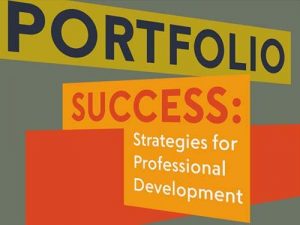
Society of Architectural Historians (SAH)
The Society of Architectural Historians has announced the recipients of the 2018 SAH/Mellon Author Awards. These awards are granted to scholars publishing their first monograph on the history of the built environment and help defray the expenses of image licensing, reproduction, and creation of original drawings and maps. SAH awarded a total of $17,498 to the following forthcoming book projects: Irit Katz, The Common Camp: Instruments of Power and Resistance on the Edge of Architecture (University of Minnesota Press), Conrad Kickert, Dream City: Creation, Destruction and Reinvention in Downtown Detroit (The MIT Press), Mariana Mogilevich, The Invention of Public Space: Design and Politics in Lindsay’s New York (University of Minnesota Press), and Ünver Rüstem, Ottoman Baroque: The Architectural Refashioning of Eighteenth-Century Istanbul (Princeton University Press).
SAH is accepting applications for the H. Allen Brooks Travelling Fellowship, which allows a recent graduate or emerging scholar to study by travel for one year. The fellowship is designed to provide an opportunity for a recent graduate with an advanced degree or an emerging scholar to see and experience architecture and landscapes firsthand, think about their profession deeply, and acquire knowledge useful for their future work. The application deadline is September 30, 2018.
SAH has announced the recipients of the 2018 SAH Awards for Architectural Excellence. Established in 2010, these awards recognize individuals for outstanding achievements in architectural practice and academic study. The 2018 winners include architects Cynthia Weese, FAIA, Robert A.M. Stern, FAIA, Harry Hunderman, FAIA, and Deborah Slaton. The recipients will be recognized at the 9th annual SAH Awards Gala on Friday, November 2, 2018, at The Arts Club of Chicago. Tickets are on sale now.
Community College Professors of Art and Art History
The Community College Professors of Art and Art History is looking for submissions for our panel at the upcoming FATE (Foundations in Art Theory and Education) Conference in April 2019. Our session, Professional Practice/Professional Foundations will be accepting submissions until September 25 on the Fate website (we are session number 42). We look forward to seeing everyone at our session and business meeting at the CAA Conference in February 2019 in New York. Need more information? Questions? Contact: Susan Altman saltman@middlesexcc.edu
Foundations in Art: Theory and Education (FATE)
Deadline: September 25: Submit your paper proposals for panels and workshops! FATE’s 17th Biennial Conference, “Foundations in Flux,” will be hosted by Columbus College of Art & Design in Columbus, Ohio on April 4th-6th, 2019. http://www.foundations-art.org/conferences
Submissions: https://www.foundations-art.org/conference-registration
Join us September 14-15, 2018, for a Regional FATE Conference at the University of Central Florida in Orlando, Florida for a symposium to share your new and developing pedagogical approaches, curriculum, and projects. This will provide the unique opportunity to hear fellow art colleagues share their experiments, successes, and failures and how they will continue to change in the future. https://www.foundations-art.org/regional-events
September 22: FATE Regional Forum: FREE: Creating the right foundations program sometimes feels like a moving target based on changing technology and theory in upper level programs. Stevenson University will host this regional forum and it will include a presentation and discussion by Catherine Behrent on the recent overhaul of MICA’s foundation program. Lori Rubeling, from Stevenson, will be discussing strategies for introducing practice-led research in foundations. To attend, please RSVP by Monday, September 10th. Please contact Lori Rubeling, LRubeling@stevenson.edu or Heidi Neff, hneff@harford.edu to RSVP.
CWA Picks for September 2018
posted by CAA — Sep 10, 2018
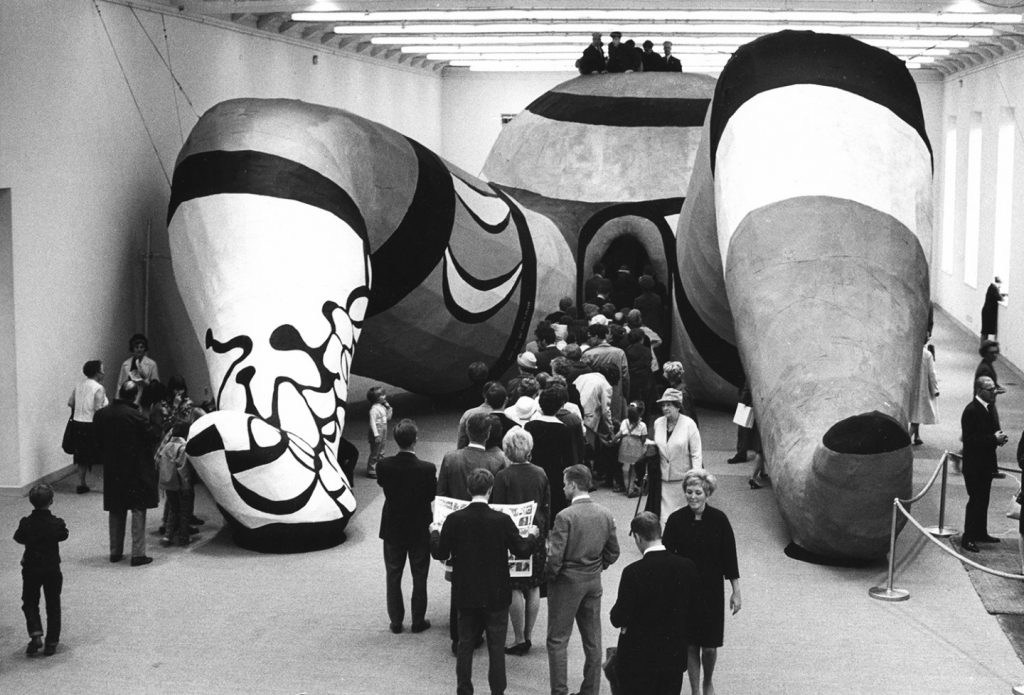
From the exhibition She – A Cathedral, Moderna Museet, 1966 Photo: Hans Hammarskiöld / Moderna Museet © Niki de Saint Phalle, Jean Tinguely, Per Olof Ultvedt / Bildupphovsrätt 2018
CAA’s Committee on Women in the Arts selects the best in feminist art and scholarship to share with CAA members on a monthly basis. See the picks for September below.
THE UN-HEROIC ACT: Representations of Rape in Contemporary Women’s Art in the US
September 4 – November 2, 2018
Shiva Gallery (New York)
The representation of women’s rape by women artists in the US is the theme of this groundbreaking exhibition curated by independent curator Monika Fabijanska. The exhibition’s title, THE UN-HEROIC ACT, is an ironic evocation of Susan Brownmiller’s characterization of the rape scenes underpinning historic masterpieces by male artists as “heroic acts.” The exhibition puts the subject under a different feminist art-historical lens, while its subtitle redresses the lasting avoidance of the word rape in favor of all kinds of euphemisms, the most prominent being “sexual abuse.”
Fabijanska claims rape as an understudied but central theme in women’s art. With this exhibition she seems to only begin sharing the results of her extensive research by illustrating and analyzing its rich iconography in light of works by a select roster of three generations of artists: Yoko Ono, Ana Mendieta, Senga Nengudi, Suzanne Lacy, Lynn Hershman Leeson, Carolee Thea, Guerrilla Girls, Jenny Holzer, Kathleen Gilje, Angela Fraleigh, Natalie Frank, Jennifer Karady, Sonya Kelliher-Combs, Andrea Bowers, Ada Trillo, Kara Walker, Roya Amigh, Naima Ramos-Chapman, Bang Geul Han, and Guerrilla Girls Broadband.
What makes women’s works radically different, says the curator, is the focus not on the action but on the lasting psychological devastation of the victim: her suffering, silence, shame, loneliness, as well as regaining control over the victim’s sexuality and psyche, thereby reclaiming the cultural narrative manifested in the most recent works. The exhibition presents subjects specific to American culture, rather than the artists’ countries of origin, and explores key themes underpinning their representation of rape, such as fairy tales, art history, war, military culture, slavery, gendered violence in Indian reservations, trafficking, college rape culture, domestic violence, criminal trials, the role of social media, etc. While its focus is on iconography, THE UN-HEROIC ACT showcases the variety of media and visual languages employed by artists addressing rape and their different effects. Redressing an art historical gap, it also timely advances a much-needed conversation about one of the most detrimental threats and traumas of women’s lives across time and space.
For details on the upcoming symposium scheduled on October 3, and other educational events see the exhibition’s website.
Hayv Kahraman: Silence is Gold
September 8 – October 27, 2018
Susanne Vielmetter Gallery (Los Angeles)
In 1991, in response to a sequence of uprisings by Kurdish nationalists within Iraq, Saddam Hussein began a brutal bombing and chemical weapons campaign of majority Kurdish towns and settlements within his country. Almost a year after the atrocities began, Human Rights Watch issued a report that reported the deaths of tens of thousands of civilians, “as security forces crushed the most serious internal threat of Saddam’s 12-year rule, and thousands more subsequently perished during one of the largest and most precipitous flights of refugees in modern times.” Hayv Kahraman was one of those refugees.
In Kahraman’s large canvases she grapples with the profoundly counterproductive ways in which rape and sexual violence survivorship is scripted into international appeals for asylum-seekers. What they reveal are the continuing violences of white colonial narratives concerning saving brown women from brown men (as per Gayatri Chakravorty Spivak and miriam cooke) and the need for verifiable, “reliable” data so central to NGO human rights operations. The paintings in Silence is Gold deliver a scathing critique of such do-gooderism that nevertheless reinscribes these fundamental inequalities.
As Dr. Miriam Ticktin writes of Kahraman’s work: “Is there a way to represent suffering respectfully, to call people into solidarity with those in need on the basis of equality? The United States government clearly does not think so, as they refuse to allow their soldiers to be photographed dead or dying: there is no dignity in this. To me, Kahraman’s haunting work confirms this; she suggests that humanitarian imagery requires commodification, sexualization, hierarchy. But thanks to her, we can see this directly, stare it in the face; she exposes humanitarianism as both compelling and corrupt, beautiful in theory and dependent on racialized, non-innocent desires. But in so doing, she creates an opening, giving us a chance to take a different type of responsibility.”
Sondra Perry: Typhoon coming on
July 13 – November 4, 2018
Miami Institute of Contemporary Art
Sondra Perry (b. 1986, Perth Amboy, New Jersey) is an interdisciplinary artist who works with video, computer-based media, and performance. Her innovative work foregrounds the tools of digital production to critically reflect on new technologies of representation and remobilize their potential. She is known for multifaceted narratives that explore the imagining and imaging of blackness, black femininity, and African American experience as well as the ways in which technology and identities are entangled. “I’m interested in thinking about how blackness shifts, morphs, and embodies technology to combat oppression and surveillance throughout the diaspora. Blackness is agile,” as put by the artist.
All the above surface in this exhibition—the first solo Museum exhibition of the artist in the US—initially installed at the Serpentine Gallery in London. The title work Typhoon coming on, 2018, is an immersive large-scale video and sound installation visually referencing the J. M. W. Turner painting The Slave Ship, 1840, which depicts the drowning of 133 slaves by the captain of the British slave ship, Zong, to claim compensation for these ‘goods’ under the salvage clause of the ship’s insurance policy. The exhibition also includes great examples of Perry’s idiosyncratic approach to sculpture, such as Graft and Ash for a Three-Monitor Workstation (2016), an interactive exercise machine mounted with monitors displaying renderings of the artist’s 3-D avatar as she questions the current productivity and efficiency culture. The video installation TK (Suspicious Glorious Absence), 2018, features Perry’s iconic Chroma key blue walls along a large video projection of an extreme close-up of the artist’s skin. Found footage of the artist’s family, protests, and body cams mingle in the accompanying video, interlacing the artists’ sources and concerns.
Remembering “She—A Cathedral”
June 3, 2018 – February 3, 2019
Moderna Museet (Stockholm)
In 1966 Niki de Saint Phalle, along with her collaborators Jean Tinguely, P.O. Ultvedt, and Pontus Hultén (the director of the still-young Moderna Museet), installed a colossal, architecturally-scaled sculpture of a reclining female figure. Viewers were invited to enter the body of the woman through her vagina—collapsing reproductive birth and recreational penetration. Inside viewers could watch a Greta Garbo movie, sidle up to a bar, view a small exhibition of paintings, and enjoy a panoramic view from the top of the figure’s pregnant belly. Hon–Kathedraal (trans. “She—a Cathedral”) remains an icon of de Saint Phalle’s output, and an enduring touchstone for the institution that showed it. Now, a little over fifty years after its original installation, the Moderna Museet dedicates an exhibition to the archival materials related to the installation’s making and reception.
All that remains of Hon is her head, and this is the exhibition’s point of departure, which explores collaboration, experience, and labor. Models, artifacts, film footage, and original works are brought to bear on one another to evince a critical-visual history of an iconic work.
Monir Shahroudy Farmanfarmaian: Sunset, Sunrise
August 10 – November 25, 2018
Irish Museum of Modern Art (Dublin)
Titled after the eponymous first and last work of the show, Sunset, 2015 and Sunrise, 2015—in a poetic curatorial evocation of the sky that conjoins and separates West and East, the two cultures bridged through the artist’s life and career—this is the first major retrospective of Monir Shahroudy Farmanfarmaian in Ireland. Bringing together great examples of the nonagenarian artist’s practice ranging from painting, sculpture, jewelry, and embroidery to collages and works on paper, some previously unseen, it tracks a multifaceted multi-decade course punctuated by volunteer and forced exile in the US and several returns to Iran, including the loss of many of her works confiscated and destroyed during the country’s 1979 Islamic Revolution. It is presided over by Farmanfarmaian’s signature mirror-mosaic pieces that best encapsulate the idiosyncratic merging of traditional Persian techniques with Western geometric abstraction that characterizes her work, eloquently contextualized and framed by the diverse sources that have inspired her practice in the show and accompanying catalogue. While her early involvement with graphic design and experimental modern abstraction in New York City gave way to a period of intense research into traditional craftsmanship and folk art in Iran’s more remote regions, Western avant-garde principles were maintained when she delved into Persian mysticism, the socio-political Islamic landscape and the signature geometry of Iran’s artistic and architectural heritage.
Farmanfarmaian was born in Qazvin, Iran in 1924. One of the first Iranians to study in the US after the Second World War, she went to Cornel University and Parsons School of Design, joined the Art Students League of New York and befriended artists including Jackson Pollock, Willem de Kooning, Frank Stella, and Andy Warhol whom she met during her early career as a fashion illustrator. In 1957 she returned to Iran, only to be forced leave during the 1979 revolution. While one of the most important living artists today in Iran, where she returned in 2004, acknowledged with a museum dedicated to her in Tehran last year, Farmanfarmaian has remained an understudied female pioneer and contributor to global modernism, and only in 2015 she had her first US museum exhibition at the Guggenheim.
Walls Turned Sideways: Artists Confront the Justice System
August 25, 2018 – January 6, 2019
Contemporary Arts Museum Houston
Evincing its title from the sage words of author and activist Angela Davis—“walls turned sideways are bridges”—the work in this wide-ranging exhibition addresses the justice system and its support and continuance of racist and classist ideologies. The artists included in the exhibition leverage strategies of institutional critique and social practice to illuminate, critique, and offer alternatives to a judicial system that inscribes those it contains as inhuman and unworthy. As guest curator Risa Puleo puts it, “Walls Turned Sideways asks if the museum is the repository for all that society values, how is the prison the repository for all society seeks to disown?”
Artists included: Andrea Robbins and Max Becher, Josh Begley, Zach Blas, Chandra McCormick and Keith Calhoun, Luis Camnitzer, Jamal Cyrus, James Drake, The Estate of Chris Burden, The Estate of Martin Wong, Tirtza Even, Andrea Fraser, Maria Gaspar, Danny Giles, Sam Gould, Michelle Handelman, Coco Fusco and Paula Heredia, Suzanne Lacy with Julio Morales and Unique Holland, Alexa Hoyer, Ashley Hunt, Improvers, Richard Kamler, Titus Kaphar, Kapwani Kiwanga, Autumn Knight, Deana Lawson, Shaun Leonardo, Glenn Ligon, Sarah Ross and Damon Locks, Lucky Pierre, Mark Menjivar, Trevor Paglen, Anthony Papa, Mary Patten, Jenny Polak, Carl Pope, Jr., Laurie Jo Reynolds, Sherrill Roland, Gregory Sale, Dread Scott, Sable Elyse Smith, and Rodrigo Valenzuela.
Hunter O’Hanian in Conversation with Eric Segal, Director of Education and Curator of Academic Programs at the Harn Museum
posted by CAA — Sep 04, 2018
CAA’s executive director, Hunter O’Hanian, recently visited the Harn Museum of Art in Gainesville, Florida to speak with Eric Segal, the museum’s director of education and curator of academic programs, about the role of academic art museums and Resources for Academic Art Museum Professionals (RAAMP).
A project of CAA supported by the Andrew W. Mellon Foundation, RAAMP aims to strengthen the educational mission of academic museums and their parent organizations by providing a publicly accessible repository of resources, online forums, and relevant news and information.
Watch and read the interview below.
Hunter O’Hanian: Hello everybody. My name’s Hunter O’Hanian and I’m the director of the College Art Association. I’m very pleased today to be with Eric Segal, who is the director of education and curator of academic programs here at the Harn Museum in Gainesville, Florida. Hello, Eric. How are you?
Eric Segal: Hunter, I’m doing well. It’s great to have you here in Gainesville.
HO: Well, it’s absolutely beautiful. It’s been great to be spending time here and to go through the museum. Before we start, tell us a little bit about your background. I know you’ve been a CAA member since you were in graduate school, but tell us a little bit about your professional background.
ES: Sure. CAA since 1993.
HO: Yay.
ES: I actually started my college career as a computer engineering major. So, it was a big change when my sister made me take an art history class and that led me into art history, and I studied American art subsequently at UCLA, Masters.
HO: And, I think you won a Terra award, too.
ES: I was really fortunate to have a Terra award in 1999.
HO: Great.
ES: And that was very exciting for me and helped me in my studies. Following the completion of my doctoral dissertation, I took an assistant professor position here at University of Florida. So, I was in the art history department teaching undergraduate and graduate courses in American art, African American art, illustration and even occasionally about museum theory. Later, in 2010, a position opened up in the museum where I was able to take on museum practice a bit more. That position was the academic programs position, which had just been created as the museum realized it was important to draw closer to the university. At that time, before the position opened up, there were perhaps a few dozen courses using the museum, because there was no one doing the outreach to work with faculty across campus.
Since that time, about 10 years, we’ve maybe increased that tenfold. The number of courses, the number of faculty, the number of disciplines and students using the museum—we’ve been really delighted to expand that quite a bit.
HO: That’s great. So, [the] University of Florida here in Gainesville, about 50,000 students here on campus.
ES: Yes.
HO: You have an art history department here. And do you have a studio arts department as well?
ES: It’s a combined school of art and art history and they’re both very robust. There’s a faculty of about seven in art history and the tens, twenties in art and they’re all great colleagues. In fact, in 2019 we will have the studio art faculty show here at the museum, which comes [around] every five years.
HO: Wonderful. So, the Harn Museum has been around since 1990. Roughly, how big is it? How many square feet is the facility?
ES: The museum is about 26,000 square feet.
HO: That’s big for an academic art museum.
ES: It is. We have all of our storage onsite. We have great galleries devoted to five collecting areas. We collect in African [art], in Asian [art], in photography, in modern and contemporary art. And we have a curator in each area. So, we’re very lucky. Many academic museums don’t have such a robust curatorial staff. And we also have classrooms where we can do teaching, where we can bring objects out from storage in order to connect with academic classes on campus if we have a theme we want to try to address, say, “urban imagery.” It may be better just with works that are in storage, rather than those that happen to be on view at a given time.
HO: And 11,000 objects in the collection?
ES: That’s right.
HO: Wow. And so how do you go about procuring objects for the collection?
ES: Right. So our curators are very active along with our development officer and our director in building relationships. So, we do have an endowment for acquisitions, but many of our acquisitions do come through gifts from donors, and that would be in all areas.
HO: I noticed too in going through the museum with you that you also have a fair number of Florida artists in your collection. Can you speak about some of them?
ES: We have Florida artists from the 19th century through the present. Some of them are former faculty at UF with international and national reputations, and some include folk artists who work locally and are widely collected and whose work reveals unexpected and inspiring perspectives on our own community. So, we have both highly-trained professional artists and amateur or untrained artists.
HO: It seems to me also that you’ve done a lot of work in your role as far as inviting members of the local Gainesville community, people who are not part of the academic campus on or into the museum through different programs. Can you talk generally about how you’ve been programming in trying to bring the local Gainesville community into the museum?
ES: Sure. So, as curator of academic programs, I obviously personally focus a lot on the academic community, but I’m also director of education as you mentioned, and I have a staff with whom I work to engage the community. I also consider that my responsibility as well. We have public programs that I think of as creating layers of access. There’s programs that are traditional museum programs of lectures and educational docent tours, which have immediate appeal to people who are familiar with museums and have a museum-going experience and know they might want to learn something about an exhibition, but we also have our whole range of activities that invite the community in perhaps for a first time. We’re creating museum goers out of our local citizenry.
So, those might be experiences that sound more fun and social, but include informal learning opportunities. We have a museum nights event once a month which is open in the evenings. So, lots of programs such as that, but we also think it’s really important to reach audiences that aren’t even looking at the museum as a possible venue for leisure or art experiences and we find it’s really effective to work with the local public schools. All children go to schools and we’re able to work with them to provide transportation and rich tour experiences and programs that engage children and parents as well. Creating the opportunity to connect with families that might not be thinking of the museum, but may learn from the children that it’s a really welcoming, relevant, and meaningful space.
HO: Overall for the whole museum, how big is the staff here?
ES: The staff, including security and frontline staff, is about fifty.
HO: Wow. Great.
ES: So, it’s pretty robust.
HO: And for academic programs and education, how big is that?
ES: In education, we have six full-time staff and a number of part-time staff who support programs and activities. So, we’re also very lucky. There are smaller museums that are working on a narrower range of staff resources.
HO: What challenges do you see for the education programs here at the Harn Museum going forward?
ES: Well, you did ask about our connecting with community audiences and our challenge is to continue to grow that and be relevant and to let audiences know that we are welcoming. We want to reach audiences that have not seen themselves in museums. So, diversity in our audiences is something we’ve done a lot to improve with by partnering with local groups, with activists, with people in different communities. We’ve done a lot to improve our diversity of audiences, but we’re still expanding there. In staff, that’s another area where we really need to work hard and we have focused part of our strategic plan extension into 2019 to focus on developing new ways to build diverse staff members across the museum, including in senior staff, which as we know in museums in the United States is a real problem.
HO: If you were speaking to someone else in your position, maybe in a more rural location or a smaller facility, and they wanted to engage the community more, what advice would you give them?
ES: That’s a great question. I think that it’s really important to let audiences know that they’re welcome and to my mind, the best way to get that message out there is by being out in the community, attending community fora on relevant topics, being part of discussions of education and educational resources, being part of discussions on how universities are trying to engage—the local university or college may be trying to engage the community, both on campus and in the community. Being a face in the community makes you somewhat approachable and starts to build the relationship that’s hard to build with an advertisement in the paper that says, “Everyone’s welcome. Admission is free”. Hopefully.
So, that would be one of the first steps that I think I would try in that position is to really be part of the community and to make contact with community leaders who already have authentic connections to different members of different areas of the community.
HO: We’re going to be recording some video practicum about different areas in the museum and we’ll get into some more of those details later, but it also seems as if you’ve developed good relationships with different departments within the college itself. Can you speak a little bit about doing that and how you go about being successful there?
ES: Some of our failures in doing that have been—not that I wouldn’t continue to do it—you know, I go and give a talk to the faculty senate and I send a letter to all faculty and I get a lot of emails back, if I’m lucky, that say, you know, I saw your email but I didn’t read it last year because you sent it to everyone. So, the hard work is making individual contacts either by email but also being out there again on campus. I try to serve on committees, be it in the international center or on undergraduate curriculum, wherever it might be useful, seeing that the museum could be a resource that can be built into emerging programs and projects. So, being at the table is important. And then building the individual connections to faculty. One faculty member in a language and literature department can be your ambassador to other faculty members.
HO: And, of course you’re familiar with RAAMP resources for academic art museum professionals, and the Harn has been one of the original stakeholders, and this has been a great project that CAA has worked on with the Mellon Foundation.
ES: Yes.
HO: We’ve been very happy with the success. As a resource out there, how have you been able to use RAAMP and also were there any changes you’d like to see to it or more things you’d like to see us add to it?
ES: Yes. RAAMP is a great resource. It’s been wonderful to see it grow and the website has, for anyone who hasn’t visited it recently, really been improved in the last year, making it searchable in a way that it wasn’t before. So, it’s a resource where you can actually find the materials that are there pretty easily now and that makes it especially useful. So, for me, it’s been great as a source of inspiration when I come up against a problem such as “How do I…?” I haven’t found this one yet, but one of my problems is how do I connect with low temperature physics? I’ve never solved that problem, but when someone posts that to RAMP, that’s where I’m going find it.
HO: Great. So, for any of you out there who have an answer to that quick question as to how to deal with low temperature physics, please post it on RAAMP now.
ES: That’s right. But, it’s really a great source of inspiration [for] problem solving and models that exist out there. It’s also I think increasingly going to continue to serve the role of [a] point for conversations, which is something that I’m really looking forward to, because sometimes someone hasn’t posted on low temperature physics, but they may have already done it. And so it’s a chance to get feedback and ideas. I’m also really looking forward to in the future ideas about building diversity, as we discussed earlier. How it’s being pursued at other museums, both in terms of audiences but also in terms of staff. I think as a community academic program officers in museums need to come together to build the pipeline of museum professionals. That includes recruiting students when they’re young. I’ve been working with high school students in the past week to just tell them that museums are a career and that’s important.
It includes supporting internships. I think that discussion can happen in RAAMP about how we can sort of strategically create a pool that we’re all going draw on to diversify our staff. I’m also looking forward to learning from RAAMP more about ideas for academic programs working with development offices.
HO: Interesting. The fundraising piece.
ES: Yes. The fundraising piece. We’re all challenged in our budgets. In the past year, we’ve developed a program on early learning that we built with the college of education, and we built a really robust project, and someone said: “You need to do a video for this.” And that video has been helpful for us in developing private funds to continue to pursue this program that provides education for headstart students.
HO: Which is great, because it gives potential funders the opportunity to see what the programs are really about and be able to see that.
ES: It is. And that’s the kind of thing I’d love to share on RAAMP and also learn from others their strategies for taking our programs and having them be tools for building our funding.
HO: Yes. I’ve been recently reviewing the session proposals for the upcoming CAA conference in New York in February of 2019 and there are a lot of sessions that are coming up for professionals in academic art museums, because I do think it’s a growing field that a lot of PhD students or PhD holders and Masters will be going into it in the future. So, there will be a lot at this year’s conference in February.
ES: That’s really great to hear. And I hope that non-museum professionals, hope that artists and art historians will attend those as well, because their voices are really useful to be part of those conversations that art museum professionals are having. I was thinking about the sort of professionalization that another area of RAAMP is going help us connect on is going to be evaluation. Museums are always challenged in terms of evaluation. We know it’s important to prove that what we do is effective. Evaluation is time-consuming or expensive or both, and sharing expertise and ideas in that area I think is going to be something that’s going to really help us to build our case in the future.
HO: Yes, I mean, ultimately all museums are educational institutions, and we have to be able to quantify how that happened.
ES: I think that is the case.
HO: Eric, thank you so much for your time here. It’s been great to tour the museum and I really have appreciated it. And so good luck with all your work going forward.
ES: Thank you, Hunter, for sharing your interest of the museum with our RAAMP audiences.
Finding Support: Personal Narratives From the Art World
posted by CAA — Aug 27, 2018
Thursday, September 27, 2018
6 PM – 8:30 PM
Kickstarter, 58 Kent St, Brooklyn, NY 11221
RSVP HERE
In the age of the gig economy, free exposure, and unpaid internships, finding a path to success and stability in the arts is increasingly unreliable. In this conversation, listen to artists, curators, arts workers and scholars discuss their own personal narratives on how, and where, they found support and resources. Panelists will discuss grants, fundraising, the importance of a digital presence for both academics and artists, and recent artist and art world salary surveys.
Panelists include:
- Andisheh Avini, Multimedia Artist
- Connie Choi, Associate Curator, Permanent Collection, Studio Museum in Harlem
- Patton Hindle, Director of Arts, Kickstarter
- Harper Montgomery, Assistant Professor, Hunter College
The conversation will be moderated by Hunter O’Hanian, executive director of CAA. Seating is first come, first served. It will be hosted by Kickstarter and CAA at Kickstarter HQ, and refreshments will follow. The building is wheelchair accessible. Registration is required for entry – click here to RSVP.
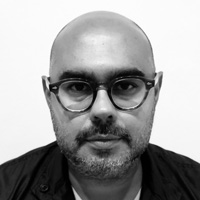
Brooklyn-based artist Andisheh Avini’s (b. 1974) practice includes painting, drawing, and sculpture, and often incorporates the traditional craft of marquetry. Avini explores the duality of his own identity by combining Iranian icons and motifs, from the decorative to the political, with Occidental traditions of minimalism and abstraction. In juxtaposing the sacred geometries of Islamic crafts with the irregularities and chaotic forms of nature, Avini reveals the distances between heritage, expectation, and the rhythms of everyday life. Avini’s approach speaks to a disparate, globalized society of nomads, and reflects a contemporary multicultural experience, marked by both collective and individual memory.
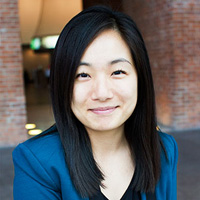
Connie H. Choi is the Associate Curator, Permanent Collection at The Studio Museum in Harlem, where she has worked on the exhibitions Fictions, Regarding the Figure, and Their Own Harlems. She is currently organizing a major traveling exhibition drawn from the museum’s permanent collection. Prior to joining the museum in February 2017, Choi was the assistant curator of American art at the Brooklyn Museum. Choi is a Ph.D. candidate in art history at Columbia University. She received a B.A. in the history of art from Yale University and an Ed.M. from Harvard University.
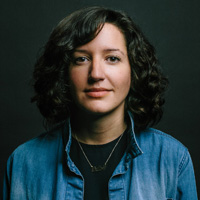
Patton Hindle is the Director of Arts at Kickstarter where she oversees the Arts team which helps visual and performing artists, arts organizations, and cultural institutions realize ambitious projects. Hindle was previously the Director of Gallery and Institutional Partnerships at Artspace and is a founder and current partner at Lower East Side gallery, yours mine & ours. She is a co-author of the forthcoming second edition of How to Start and Run a Commercial Art Gallery. Hindle was raised in London and attended university in Boston.
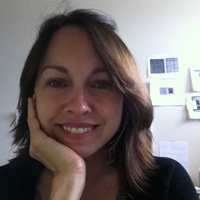
Harper Montgomery teaches in the Art and Art History Department at Hunter College in New York City. She has written for The Art Bulletin, Art Journal, and the Brooklyn Rail; and has organized exhibitions on art of the nineteenth-century, the twentieth-century, and the present for the galleries of Hunter College. Her book The Mobility of Modernism: Art and Criticism in 1920s Latin America was published last year by University of Texas Press and won the Arvey Foundation Book Award for distinguished scholarship on Latin American Art. Her current research concerns the ascent of artesaníawithin contemporary art spaces in Latin America during the 1970s.
Top image credit: Andisheh Avini, Untitled (wood, marquetry, assorted minerals), 2015. Photo credit Emily Hodes, courtesy Marianne Boesky Gallery.
An Interview with Jim Hopfensperger, the New President of CAA
posted by CAA — May 24, 2018
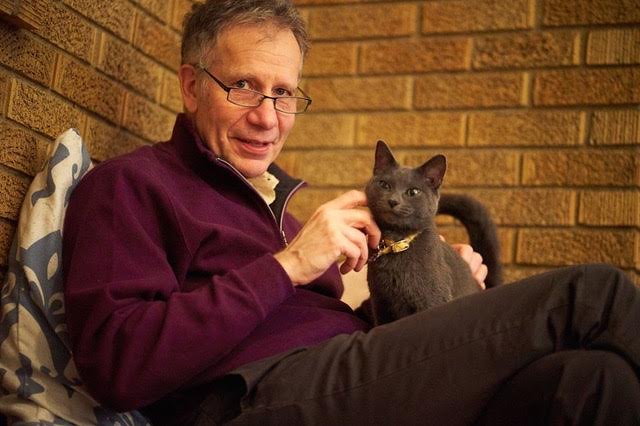
Jim Hopfensperger at home.
As of this month, Jim Hopfensperger, professor of art at Western Michigan University’s Gwen Frostic School of Art, is CAA’s new president for the 2018-2022 term. As a professor and artist with a wealth of experience, we thought it would be a great opportunity to ask Jim his thoughts on CAA and the field at-large. CAA media and content manager Joelle Te Paske spoke with him earlier this month.
JTP: Hi Jim! Thanks so much for speaking with me. How are you?
JH: Very well, Joelle. Thank you so much for taking the time to visit!
JTP: To get us oriented, where did you grow up?
JH: My spouse, Jane, and I were raised in the upper Midwest. While career choices took us to Pennsylvania and Massachusetts, we returned “home” to Michigan eighteen years ago to be nearer aging family members.
JTP: And what did you study?
JH: I was educated as a craftsperson, working primarily in non-ferrous metals such as silver, gold, and copper. During a sabbatical leave from my faculty position at Penn State University in the early 1990s, I was presented the opportunity to work in a furniture studio in Massachusetts. Within a few weeks I was totally hooked, gifting my metal working tools to a younger artist and moving forward as a furniture maker.
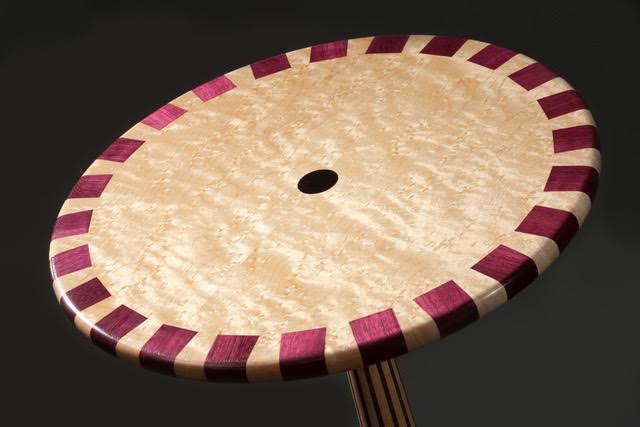
Jim Hopfensperger, Shaker Purple, 2012
JTP: What drew you to the work you do now?
JH: I am drawn to how creating art/design objects—one-at-a-time and by hand—reinforces and reaffirms what it means to be a human being. Thinking with my hands, my eyes, and my mind to conceive well-designed and useful articles makes me feel whole. Perhaps I am a kinesthetic thinker/learner? It also seems possible that, for better and for worse, my sense of self is simply anchored in making things. The non-existent term “neuroceutical therapy” comes to mind!
JTP: What is exciting to you as the incoming CAA president?
JH: The forces of change are in motion all around us. It is a truly exhilarating time to be in the business of living!
As for CAA, a raft of research suggests that healthy organizations prosper when focusing efforts along two key pathways: 1) identifying and strengthening essential core competencies and 2) systematically exploring future capacities. This means sustaining CAA’s outstanding programs and services while simultaneously identifying the organization’s next purposes. Full attention to both matters seems essential if we are to extend a highly distinguished history of advocacy for artists, art historians, scholars, curators, critics, designers, collectors, and educators. I am grateful for this opportunity and excited about the work ahead.
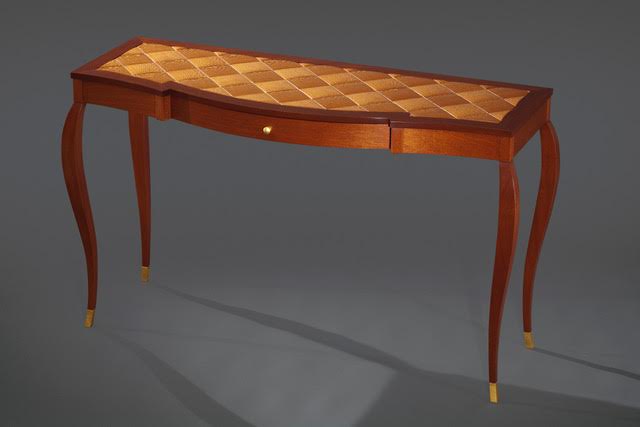
Jim Hopfensperger, Deliberation No. 7, 2005
JTP: What work has been done over the past few years that you would like to build on? What would you like to see happening at CAA in the next year? How about in the next ten?
JH: Clearly, CAA remains an eminent learned society. At the same time it is increasingly fulfilling its potential as a professional association that serves members across educational, curatorial, scholarly, and creative pursuits. In the short term I am confident CAA will remain a strong association and identify more ways to support members in their professional lives.
Over the next few years a pivot toward some key constituencies might make strategic sense. Those include 1) the burgeoning ranks of contingent employees upon whom educational and cultural institutions have become increasingly reliant; 2) the large number of design and new/emerging media practitioners graduating from art and design programs; and 3) the community of international scholars, artists, and designers steadily advancing global perspectives. I look forward to working with CAA members, staff, board, and other stakeholders to map a future wherein these colleagues will be well served.
JTP: What has been a memorable professional moment for you at a CAA Annual Conference?
JH: I am deeply invested in the fellowship aspects of CAA. My fondest memory involves mentoring in the Professional Development Workshops at the Annual Conference in 2000. One my mentees was, as I, trained as a metalsmith. We worked closely after that conference to identify strategies for achieving his professional goals, and he eventually accepted a splendid academic position. In return for my service, and for each of the past eighteen years uninterrupted, he has gifted to me a handcrafted metal ornament to hang on our family holiday tree. Simply precious! (And if you are reading this Professor James Thurman, a wholehearted “Thank You!” is long overdue.)
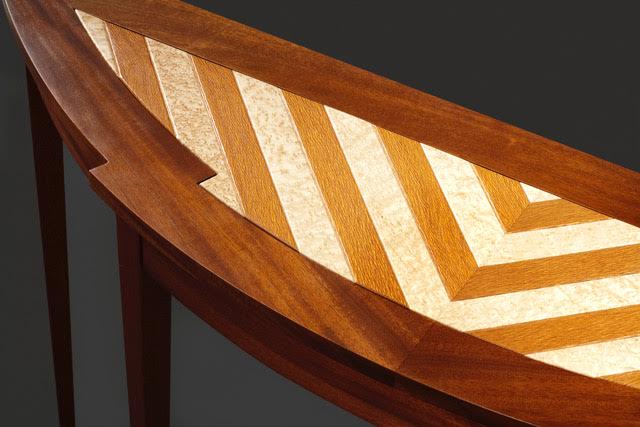
Jim Hopfensperger, Deliberation No. 9, 2013
JTP: What would you say is the number one challenge facing higher education?
JH: Excellent question. My two cents: Adapting to the startling, inevitable pace of cultural and technological change is an operational necessity. Yet, communicating the value of an educated populace appears to be our most immediate and pressing challenge. Making the case for the causal relationship between educational opportunities and the ascendance of an increasingly ethical, moral, and empathetic society is job one. In the absence of such a mission statement, it is not difficult to imagine financial or economic ‘values’ easily filling the void.
The logical outcome might then resemble Oscar Wilde’s timeless quip about a cynic being ‘a man who knows the price of everything and the value of nothing.’
JTP: Do you have a favorite artwork?
JH: I have a keen interest in all forms of applied design—dynamic and surprising buildings, objects, communications, products, and processes. However, and for reasons I am not fully able to explain, my favorite artwork is Monet’s Four Trees in the Met’s collection. This quiet little companion and I visit perhaps once every 12 to 24 months. Invariably, I leave our encounters refreshed and restored.
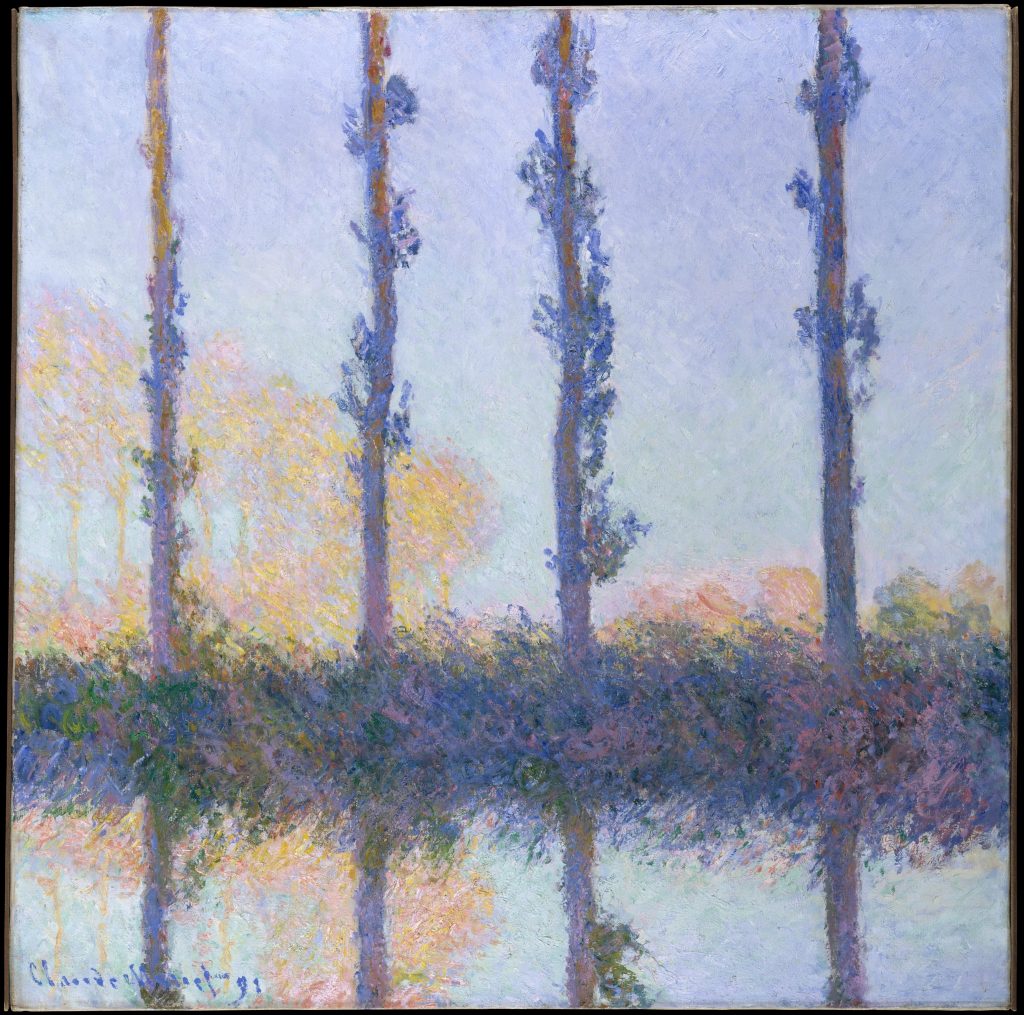
Claude Monet, The Four Trees, 1891, oil on canvas, 32 1/4 x 32 1/8 in. (81.9 x 81.6 cm) Collection of The Metropolitan Museum of Art. Image: Wikimedia Commons
JTP: What about a favorite book?
JH: Much of my reading over the past decade can be described as a search for serviceable maps of the human mind, followed by rubbernecking at accidents caused by irrational behaviors. Daniel Kahneman’s Thinking Fast and Slow is a fine example of the former, the type of mind mapping I find highly addictive. Kahneman’s lenses for understanding our extraordinary capabilities, while simultaneously identifying those pesky faults and deep biases that accompany human thought and action, help structure my own thinking. In a related way writings on decision-making in everyday life are equally intriguing and useful. Charles Duhiggs’s The Power of Habit, Dan Ariely’s Predictably Irrational, Keith Payne’s The Broken Ladder successfully illustrate complexities and contradictions when/where supposedly rational thoughts and human actions intersect, often to hilarious and/or tragic effect—endlessly fascinating stuff!
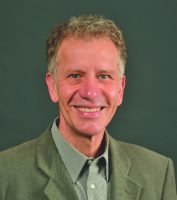
Jim Hopfensperger is a professor of art at Western Michigan University’s Gwen Frostic School of Art where he teaches foundation art. Jim’s art works have been shown nationally and internationally in over 100 exhibitions at venues including the Detroit Institute of Arts, Nelson-Atkins Museum of Art, Auckland Memorial Museum, Lever House, University of Iowa Museum of Art, University of Oregon Museum of Art, State Museum of Pennsylvania, North Carolina Museum of History, and National Ornamental Metals Museum.
Jim’s past appointments include serving as Senior Associate Dean in the College of Fine Arts at Western Michigan University, Chair of the Department of Art & Art History at Michigan State University, and Head of the Studio Art Program at The Pennsylvania State University. He has also taught at the Massachusetts College of Art, University of Massachusetts-Dartmouth, Skidmore College, University of Michigan, and North Carolina State University.
Jim is Past President of the National Council of Arts Administrators, and is an accreditation visitor for the National Association of Schools of Art and Design. He earned a MFA from University of Michigan, a MA from University of Illinois at Urbana-Champaign, and a BA from Michigan State University.



